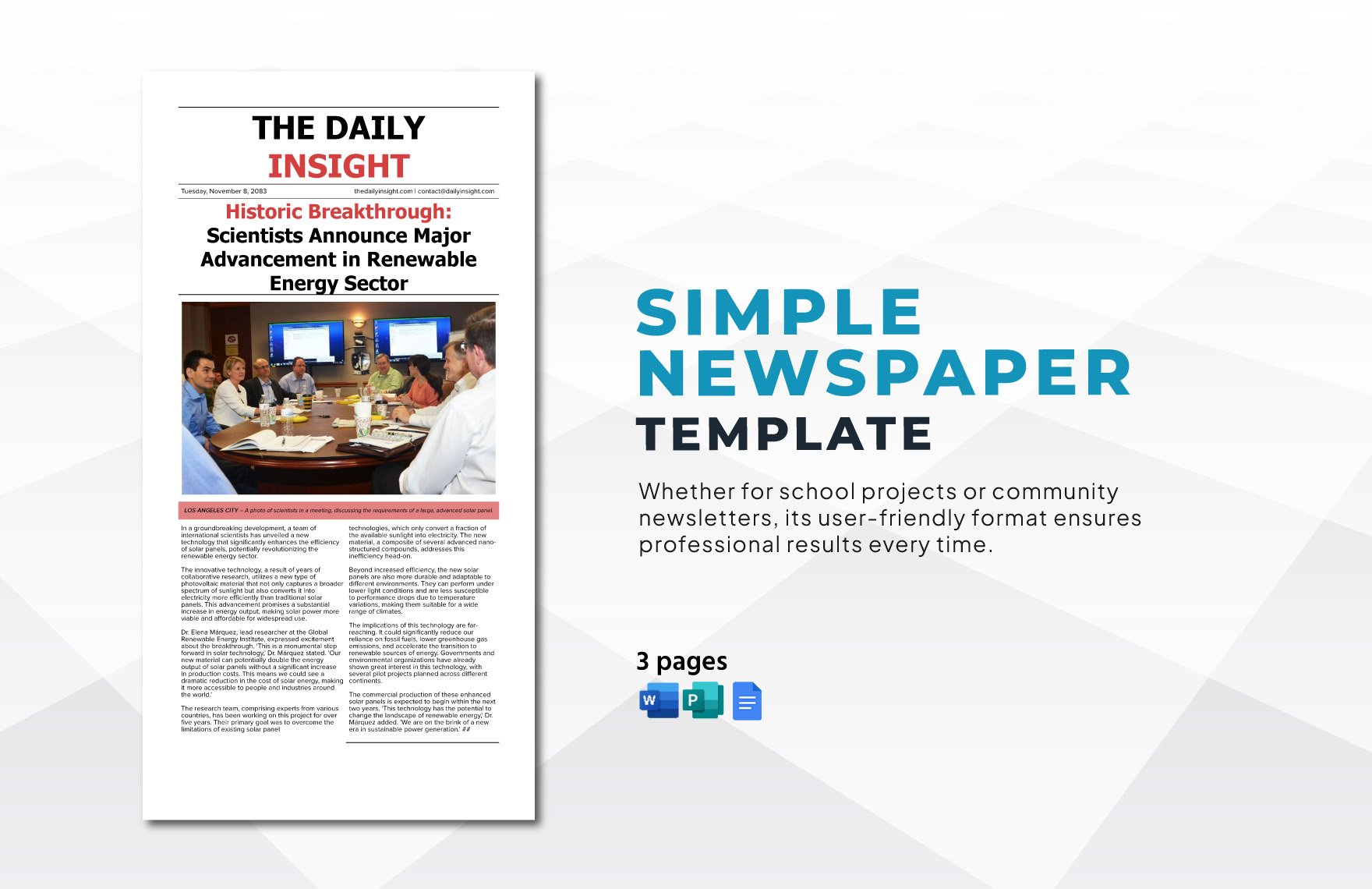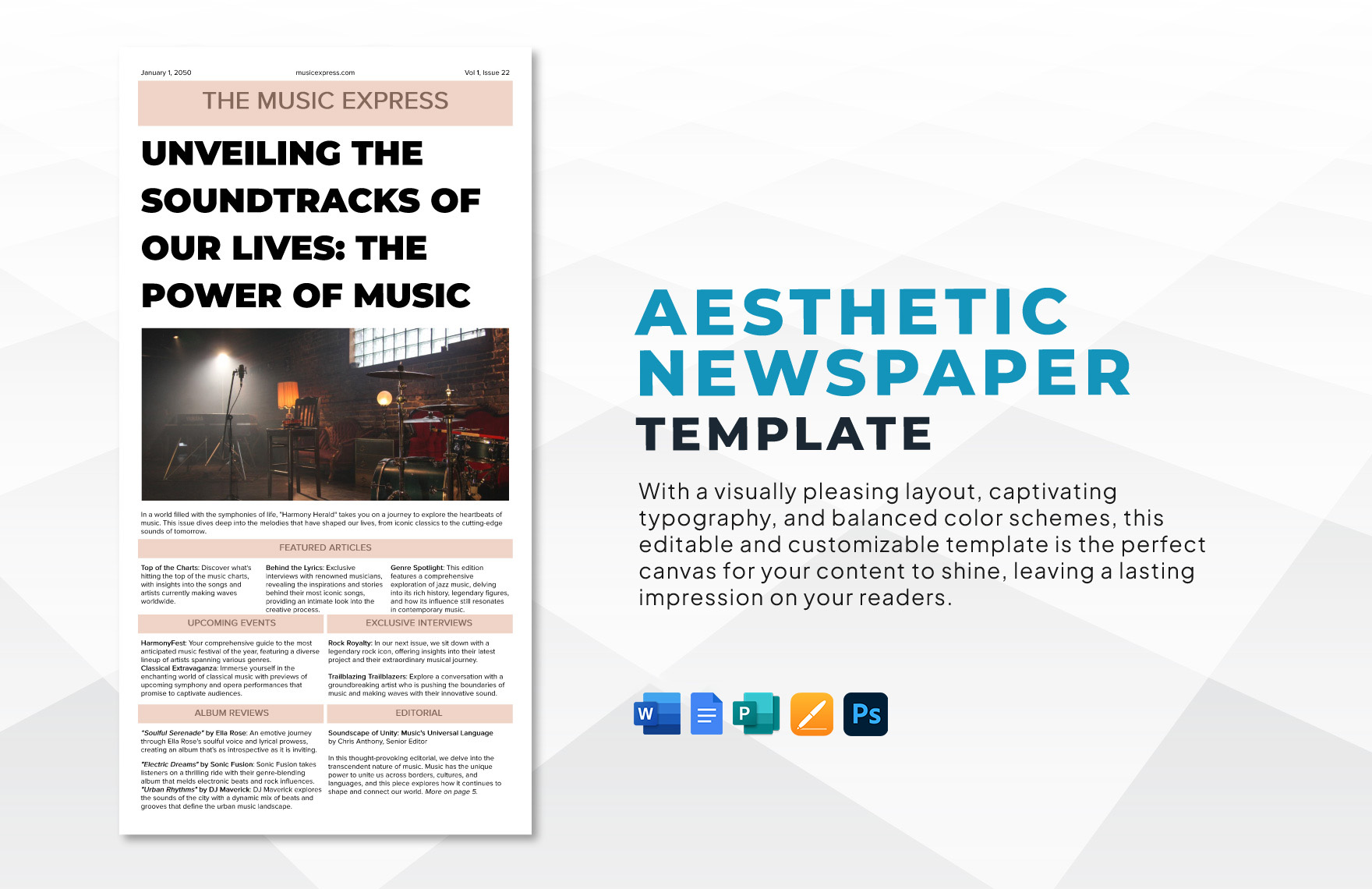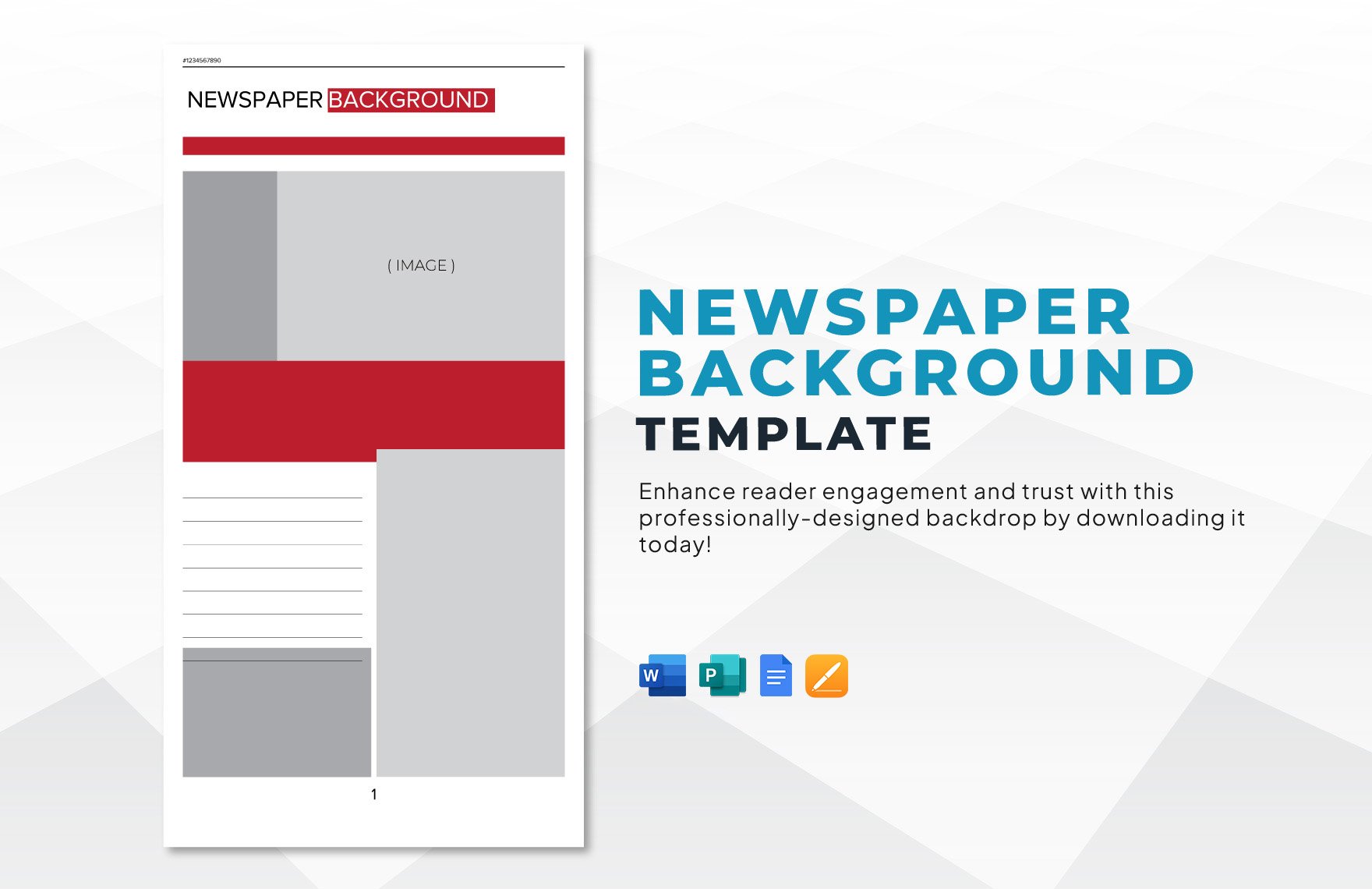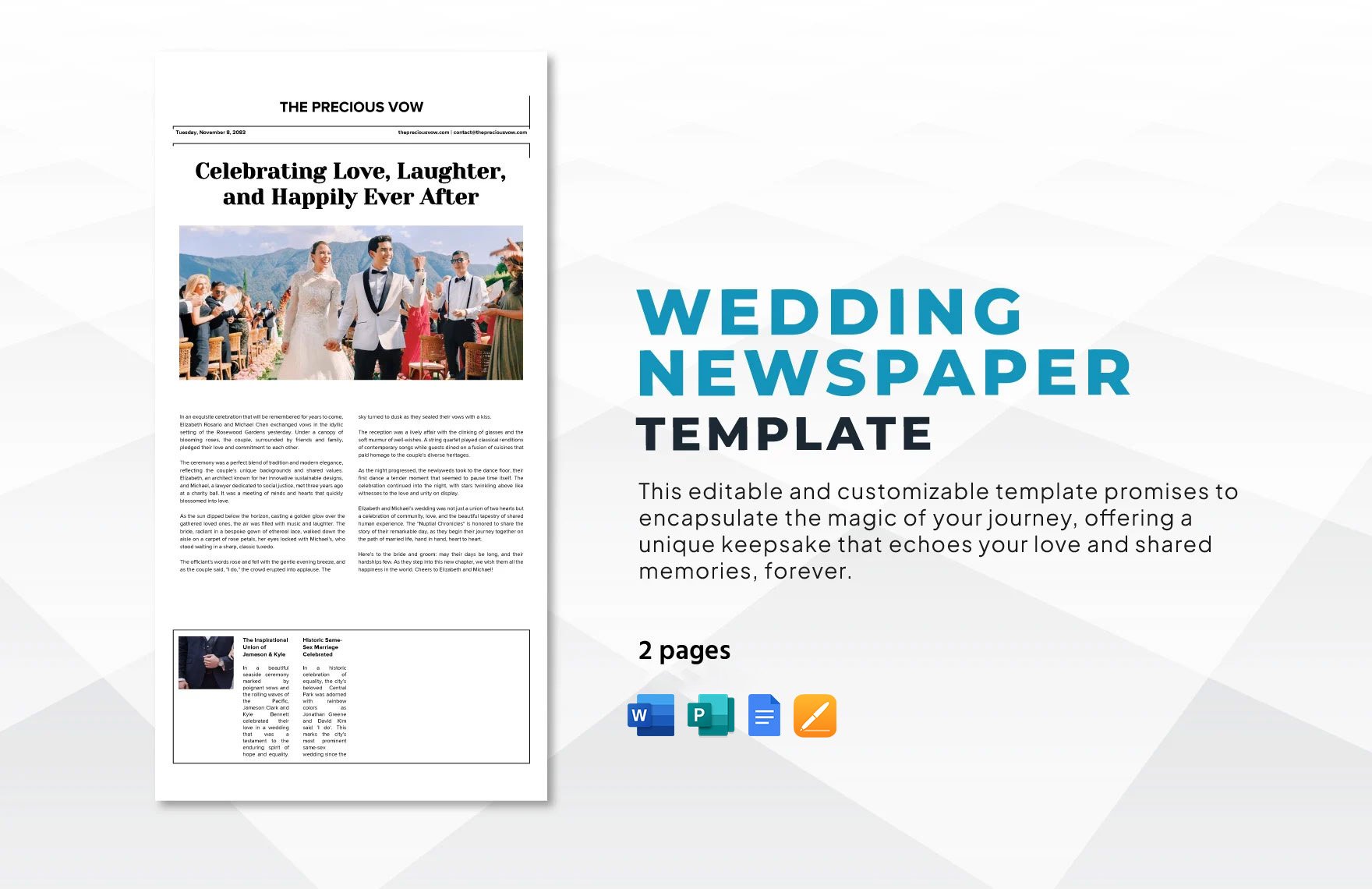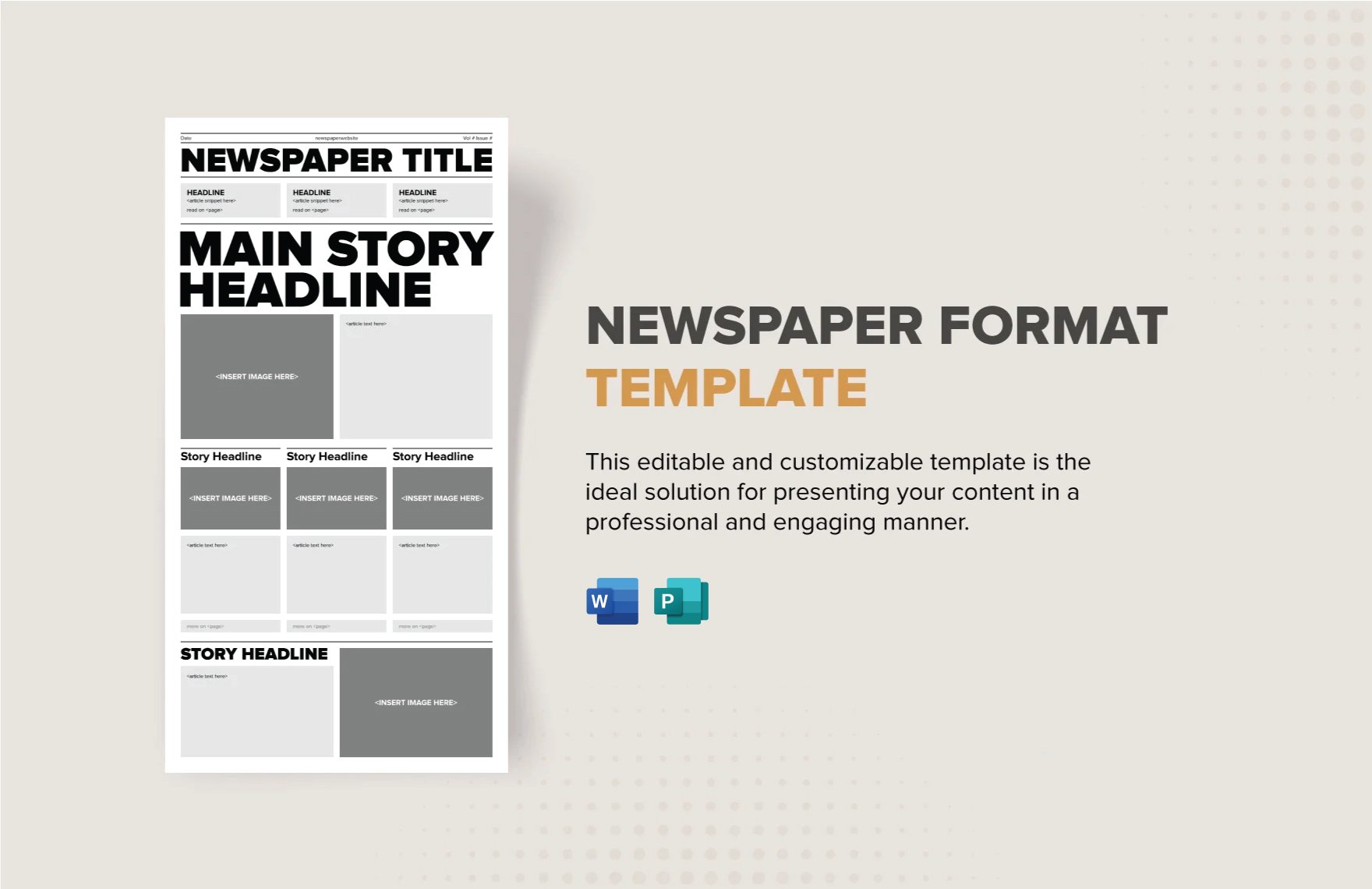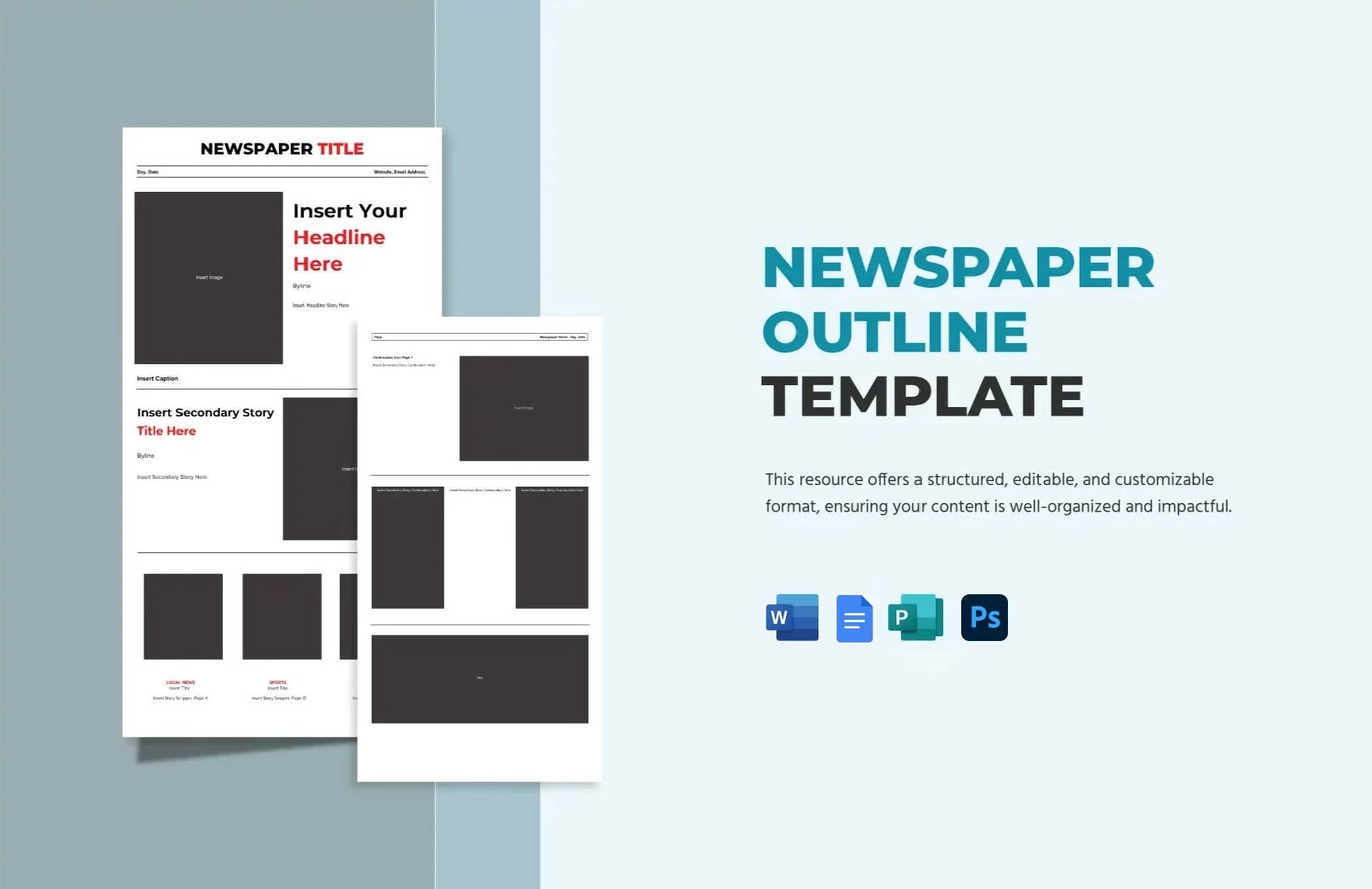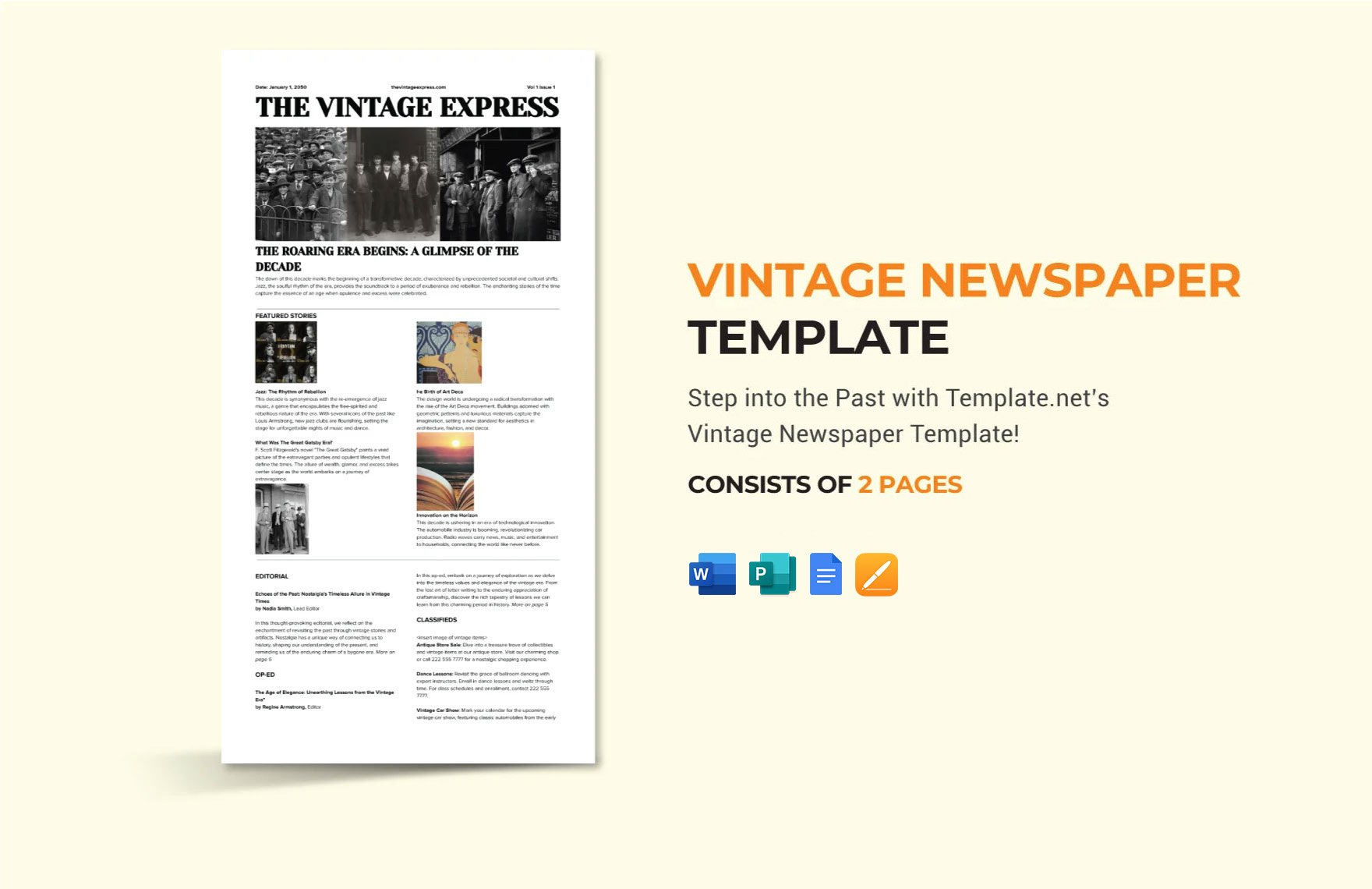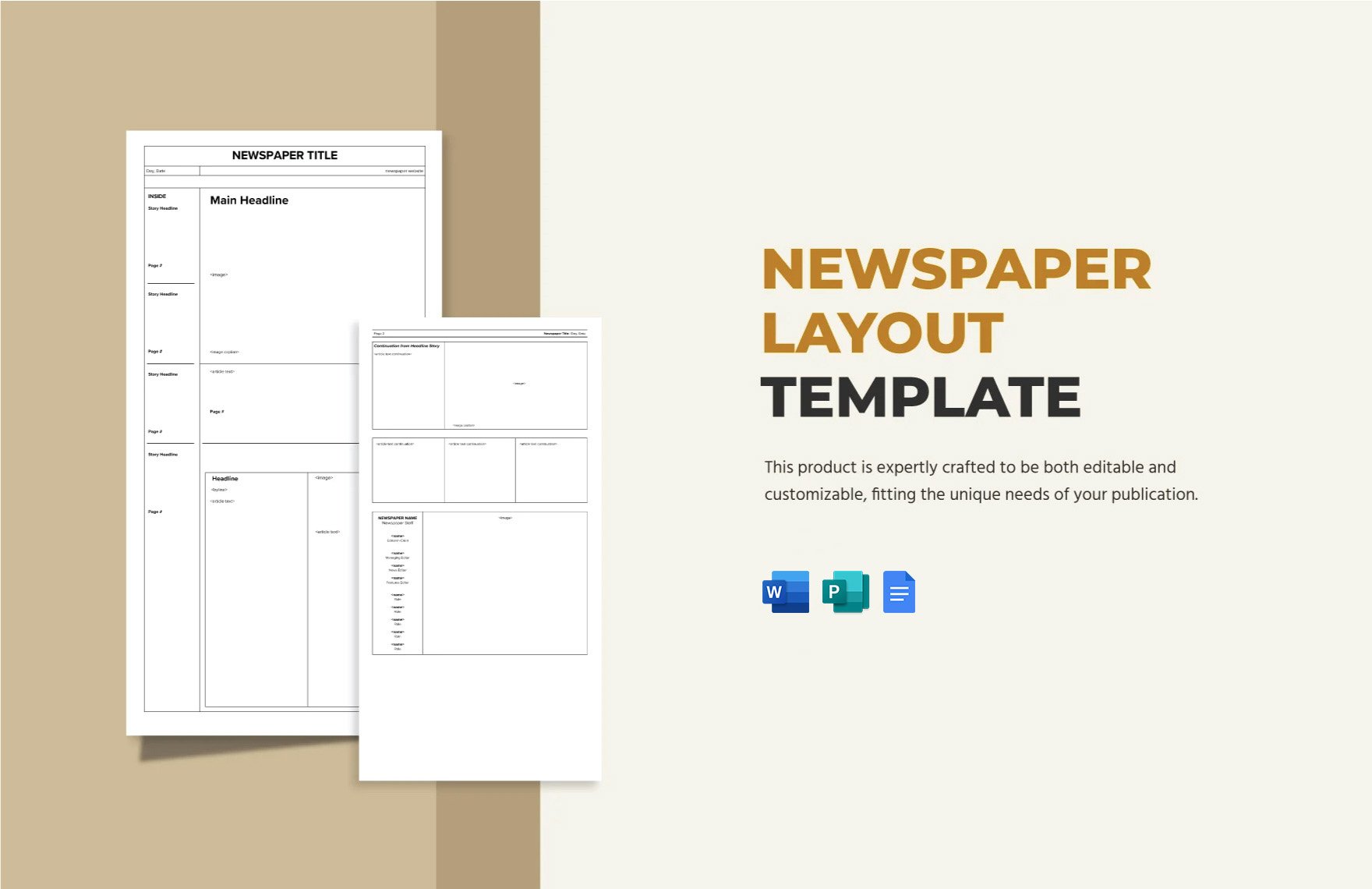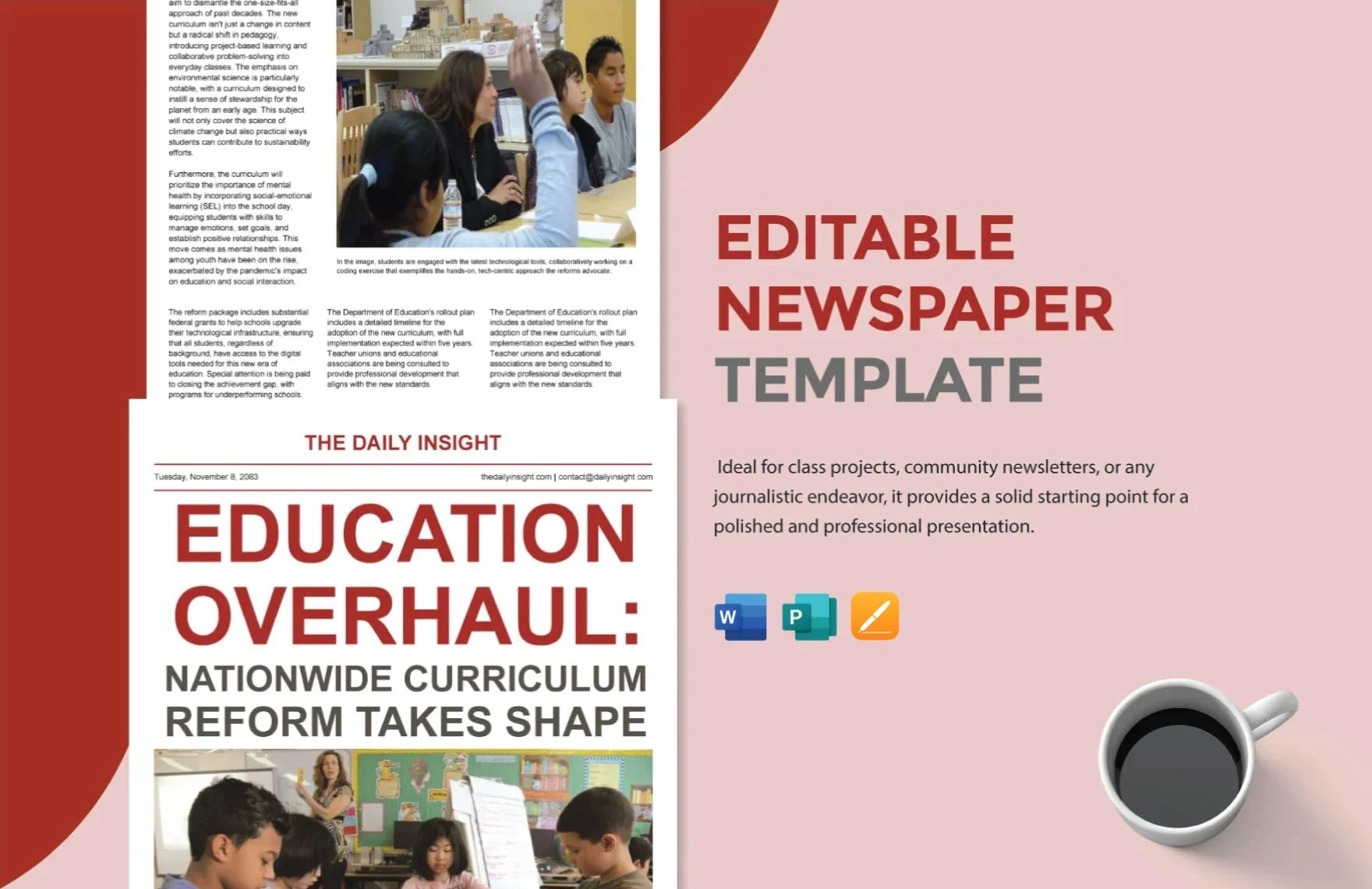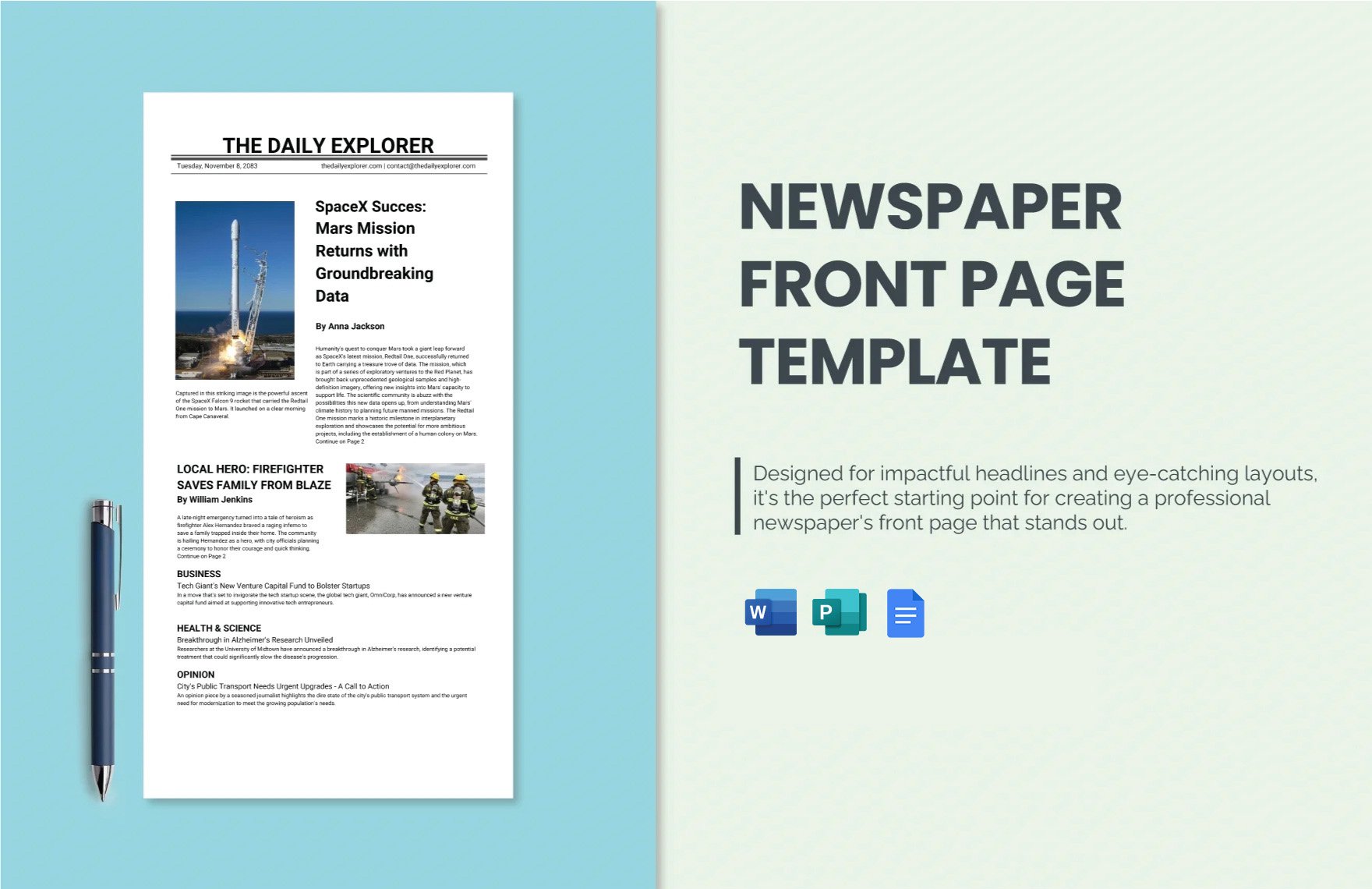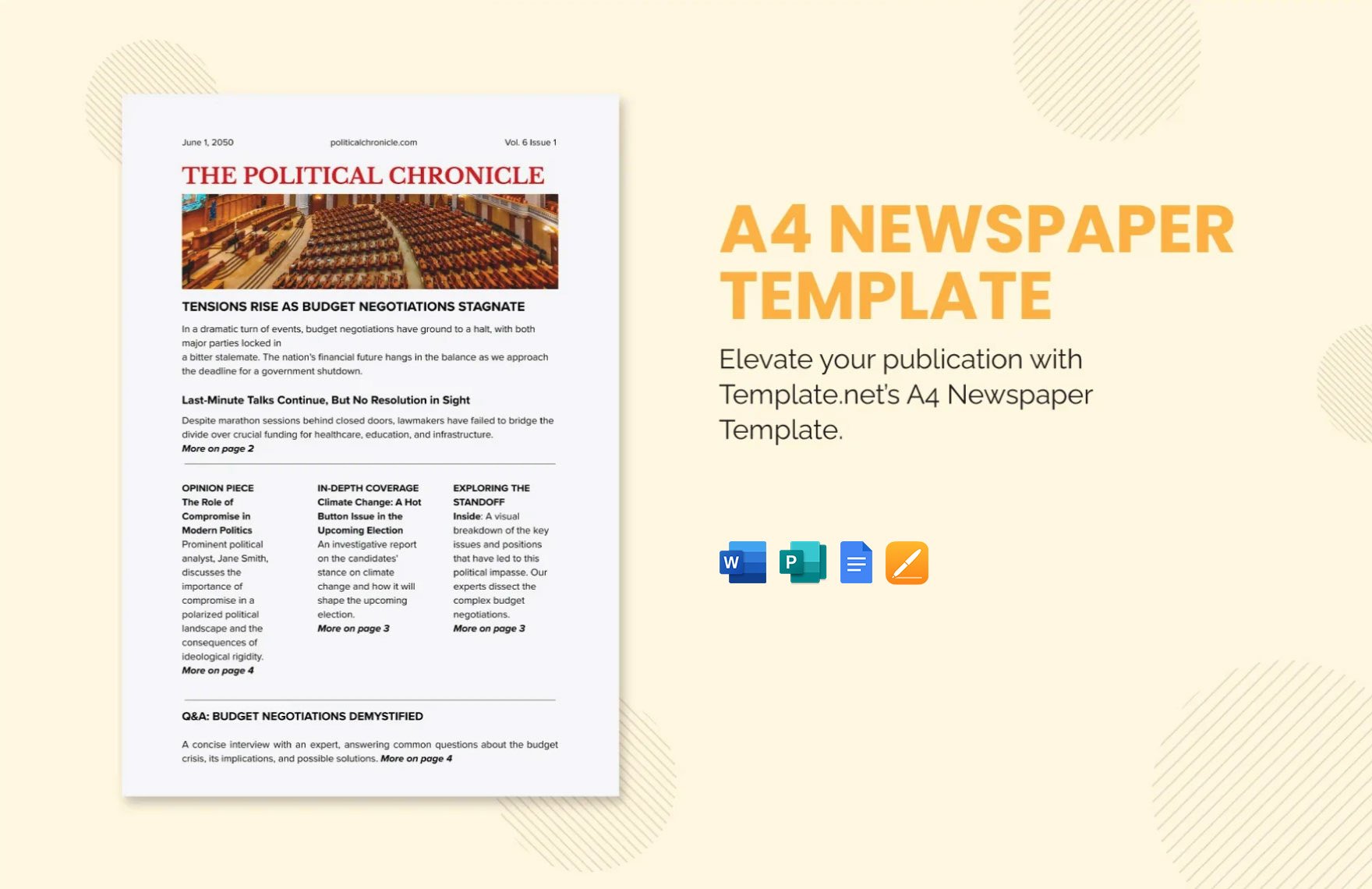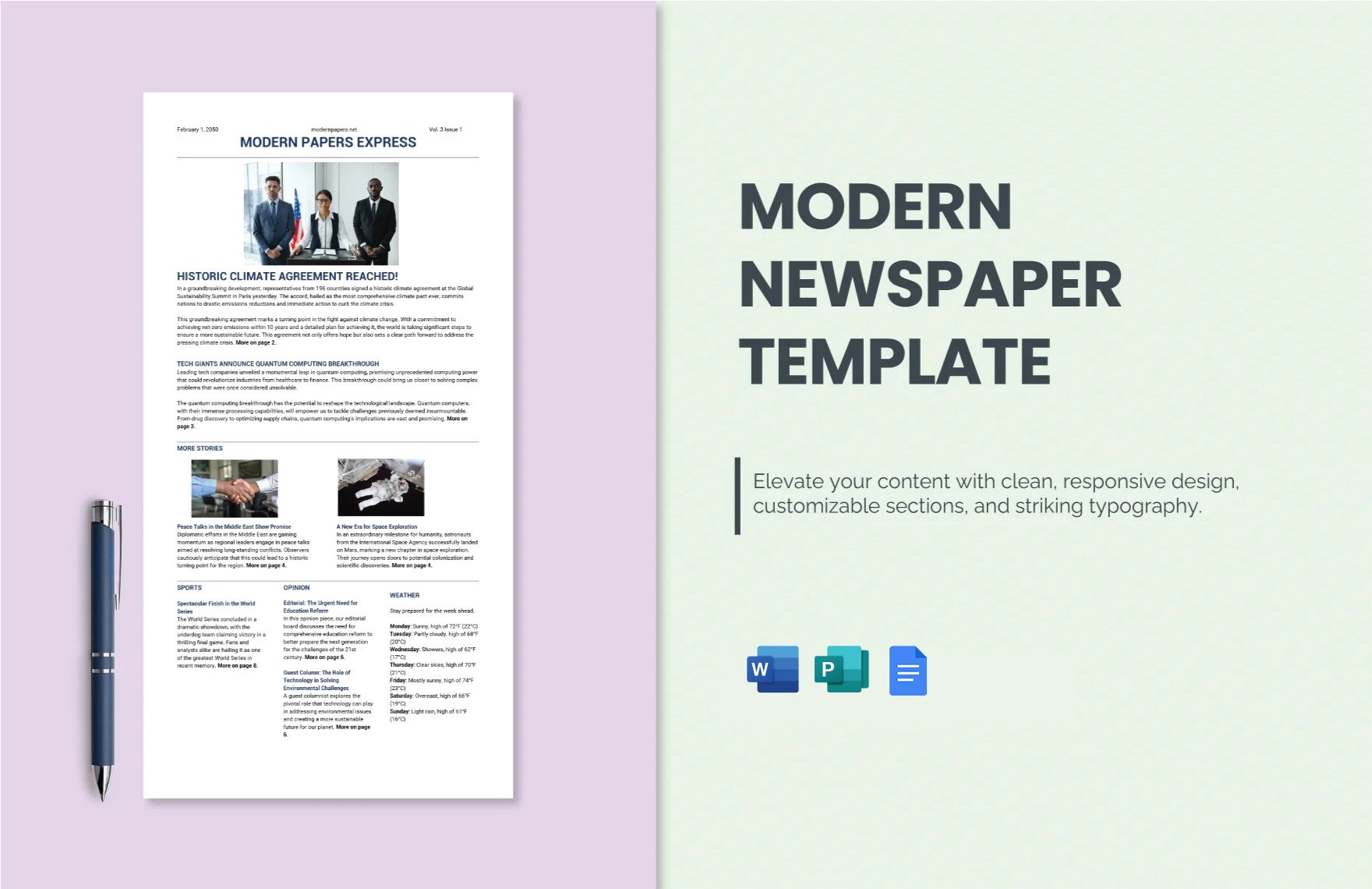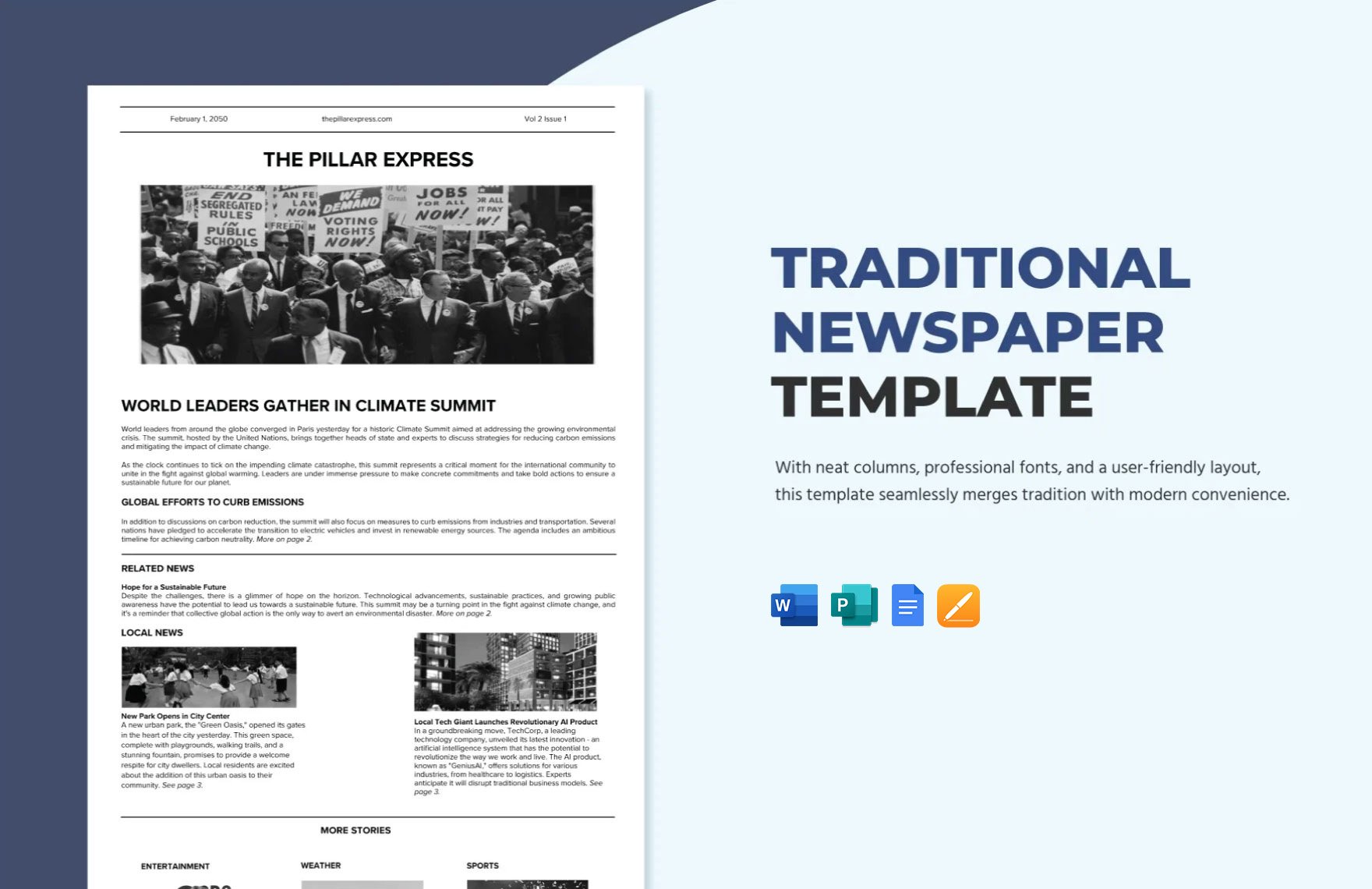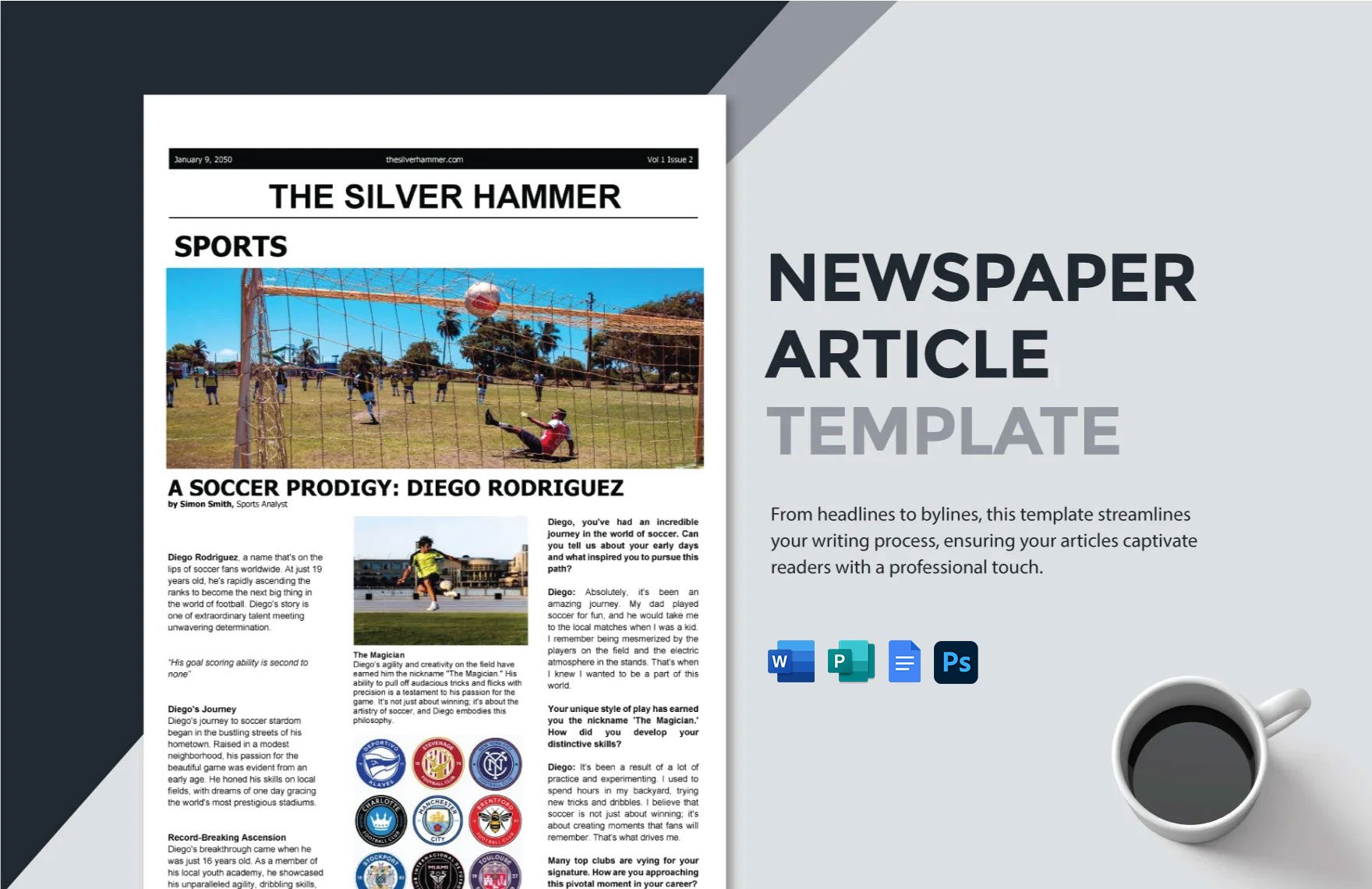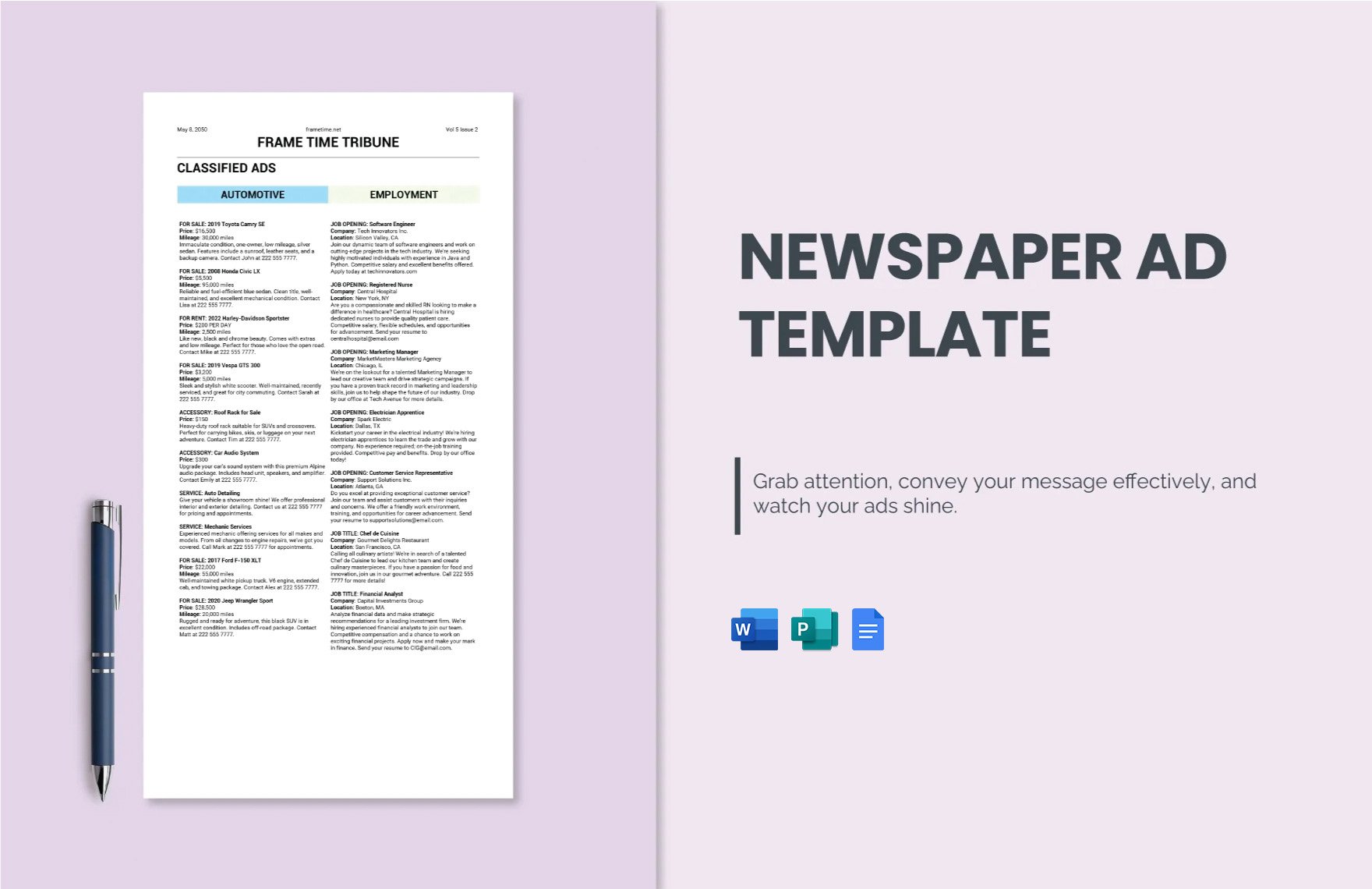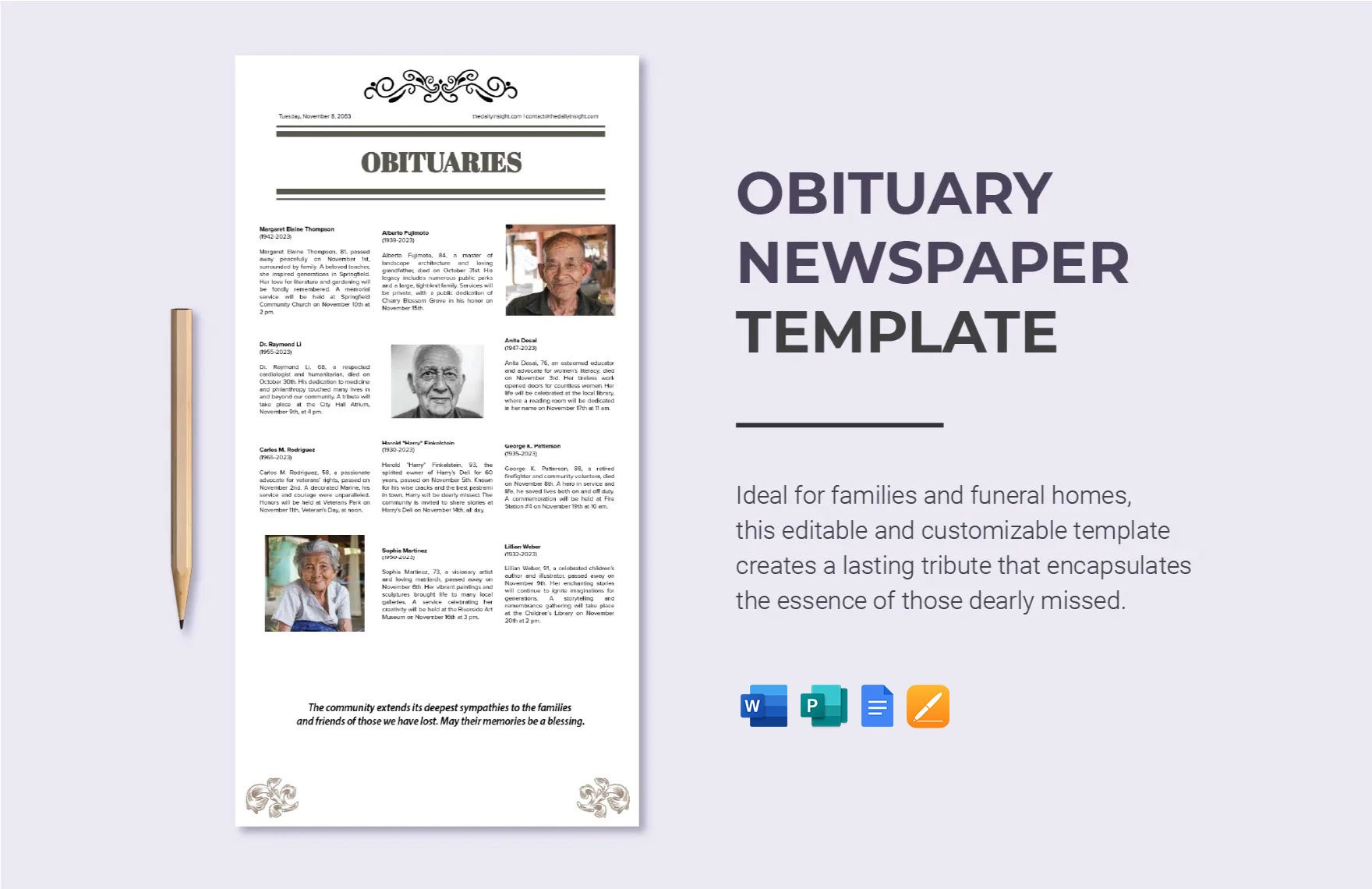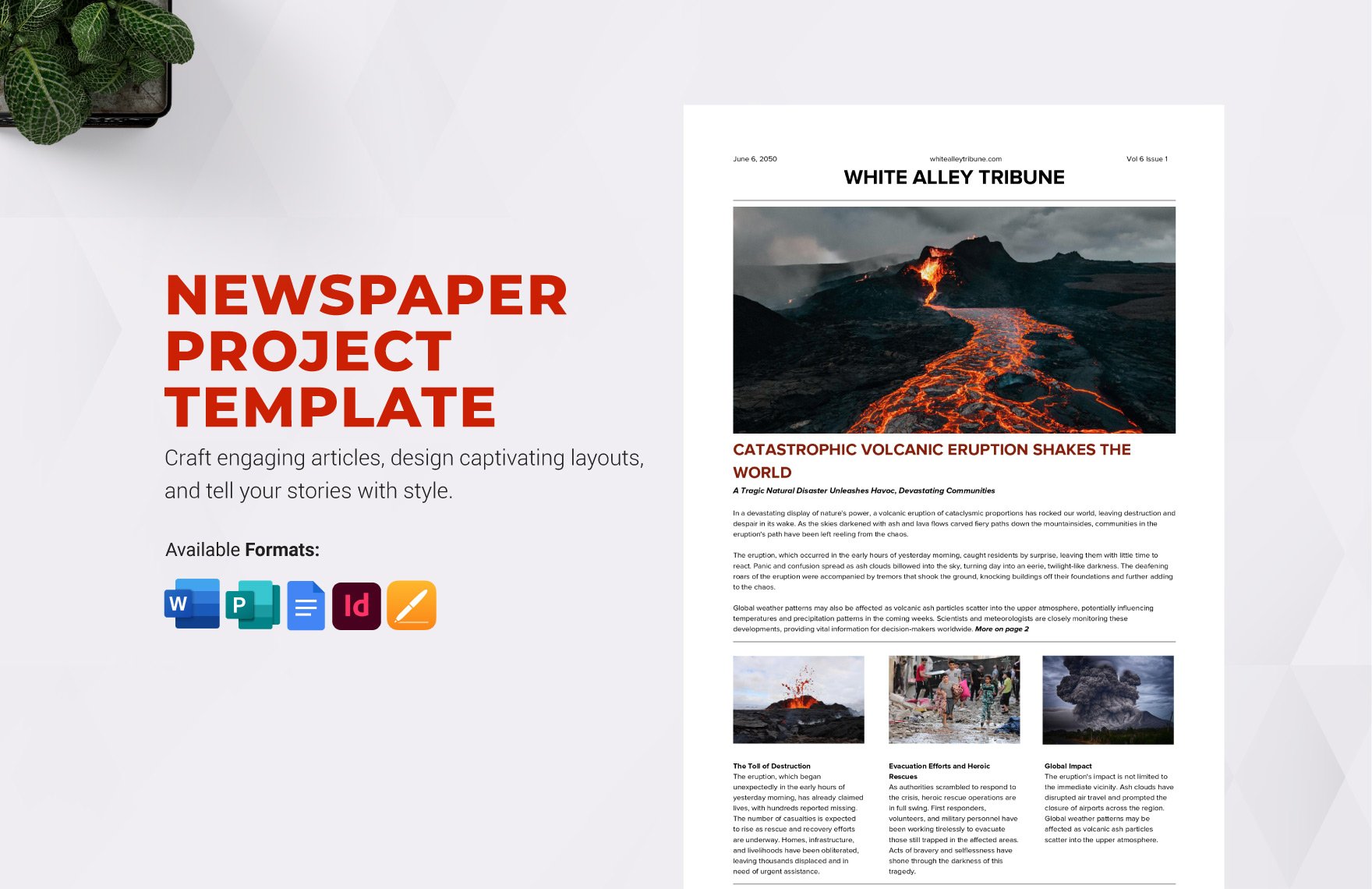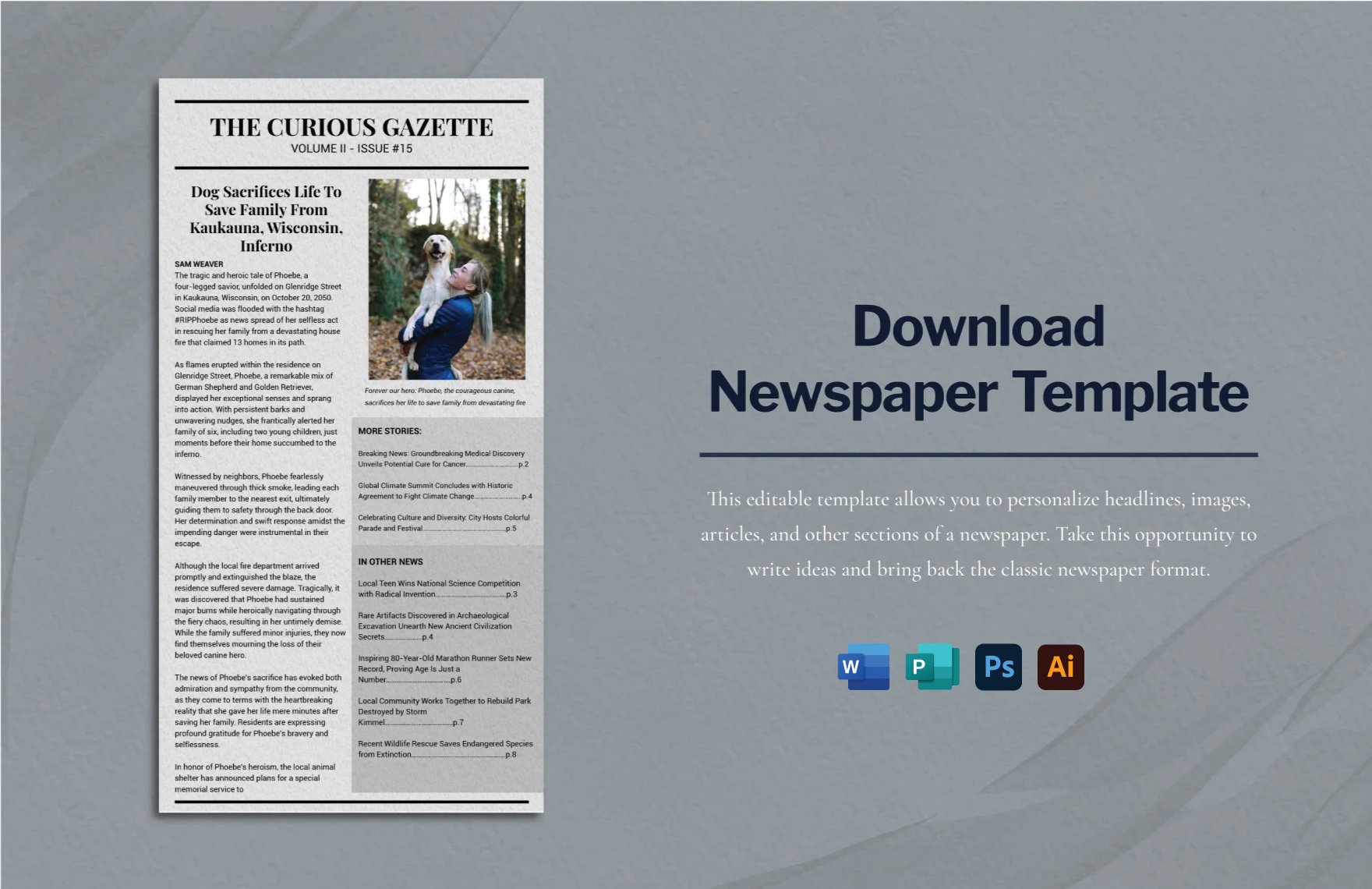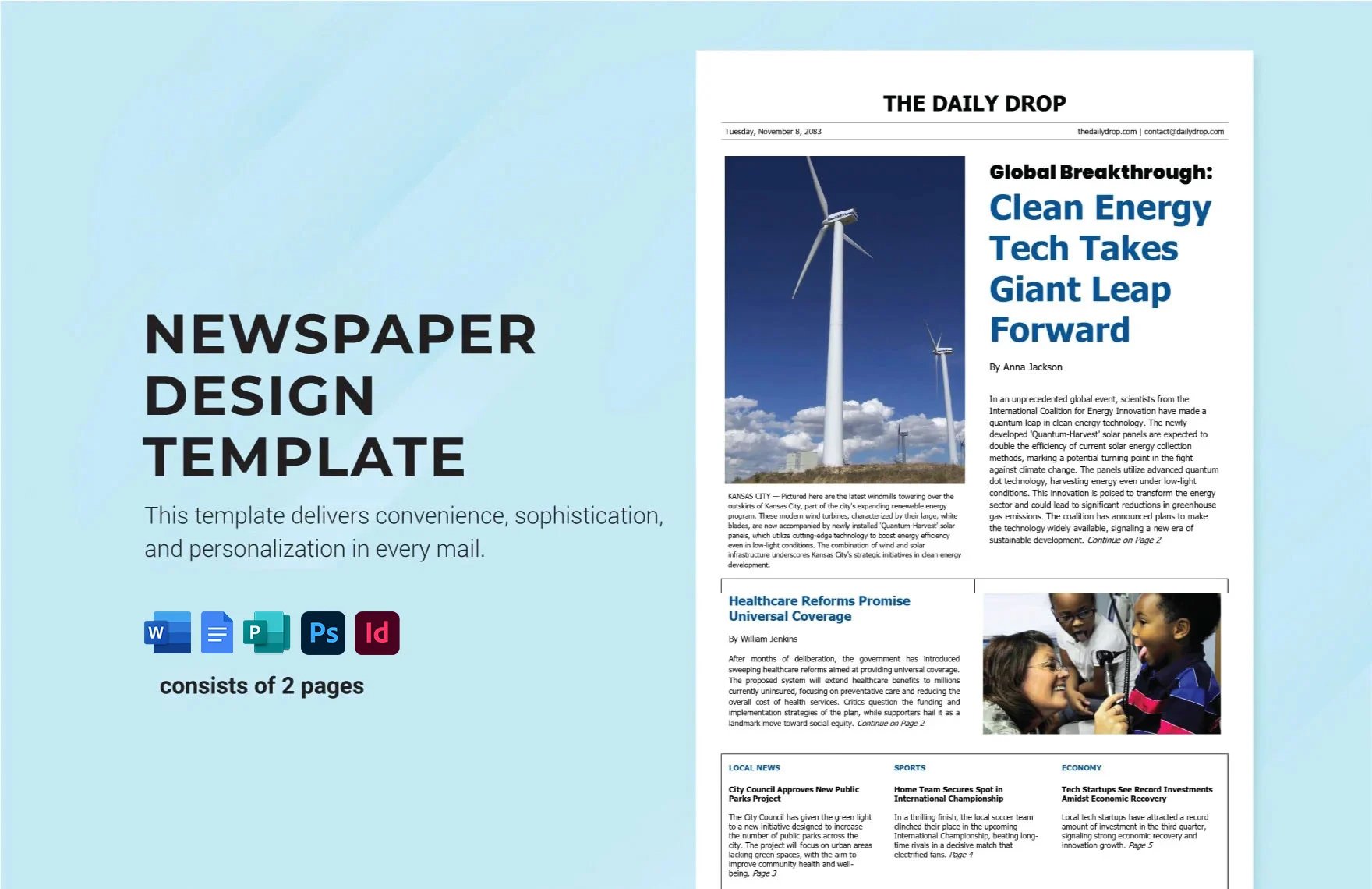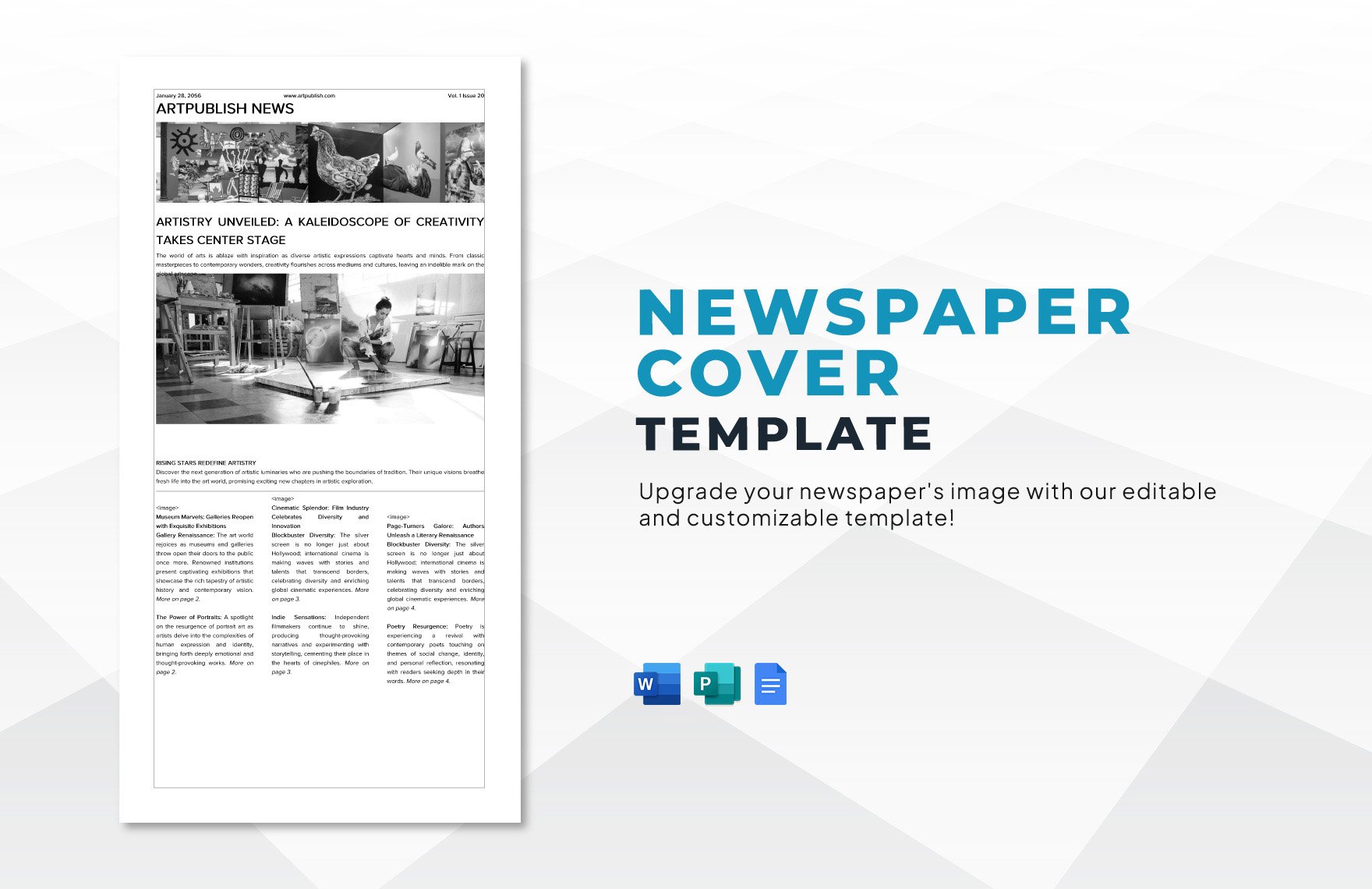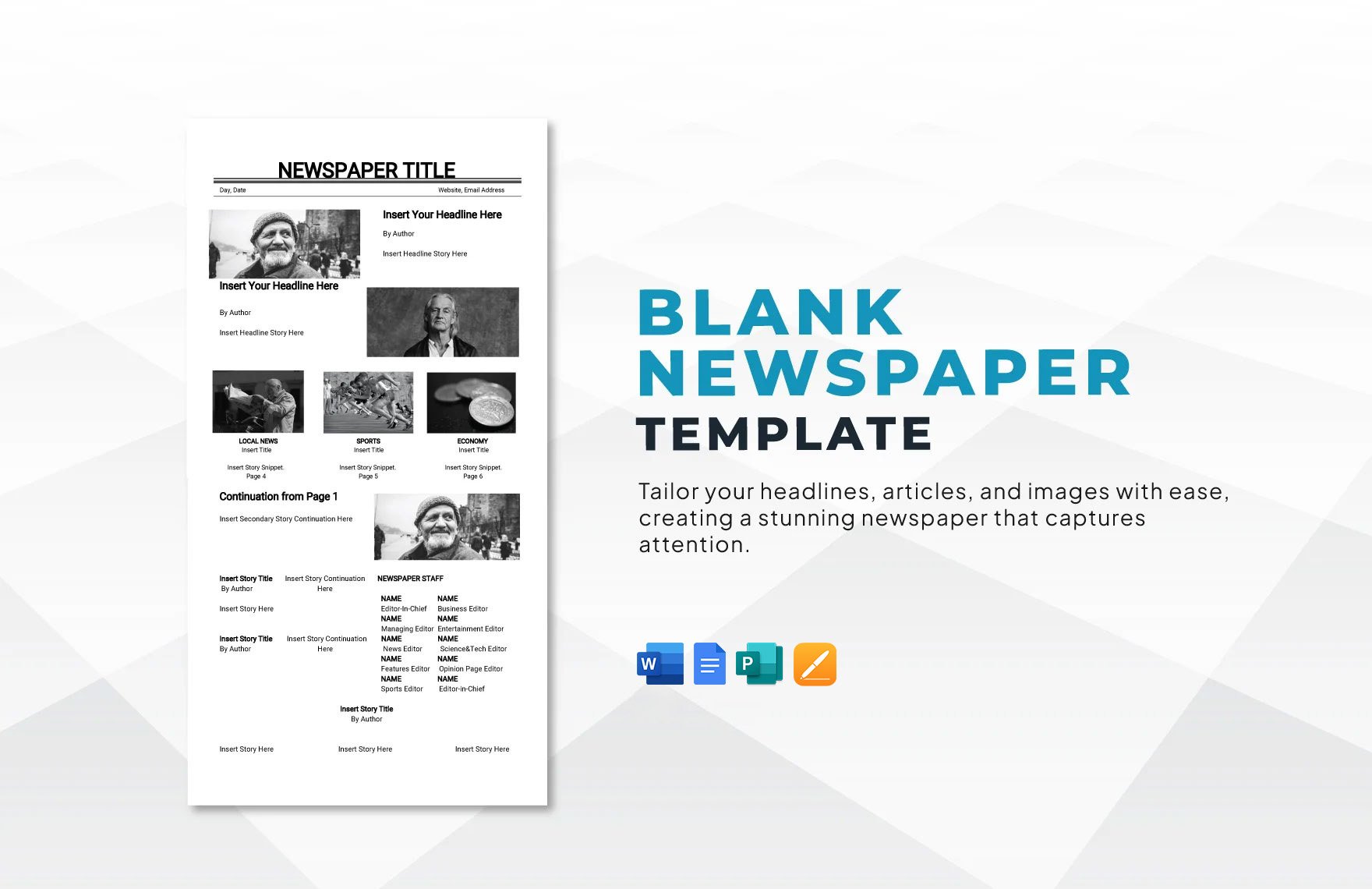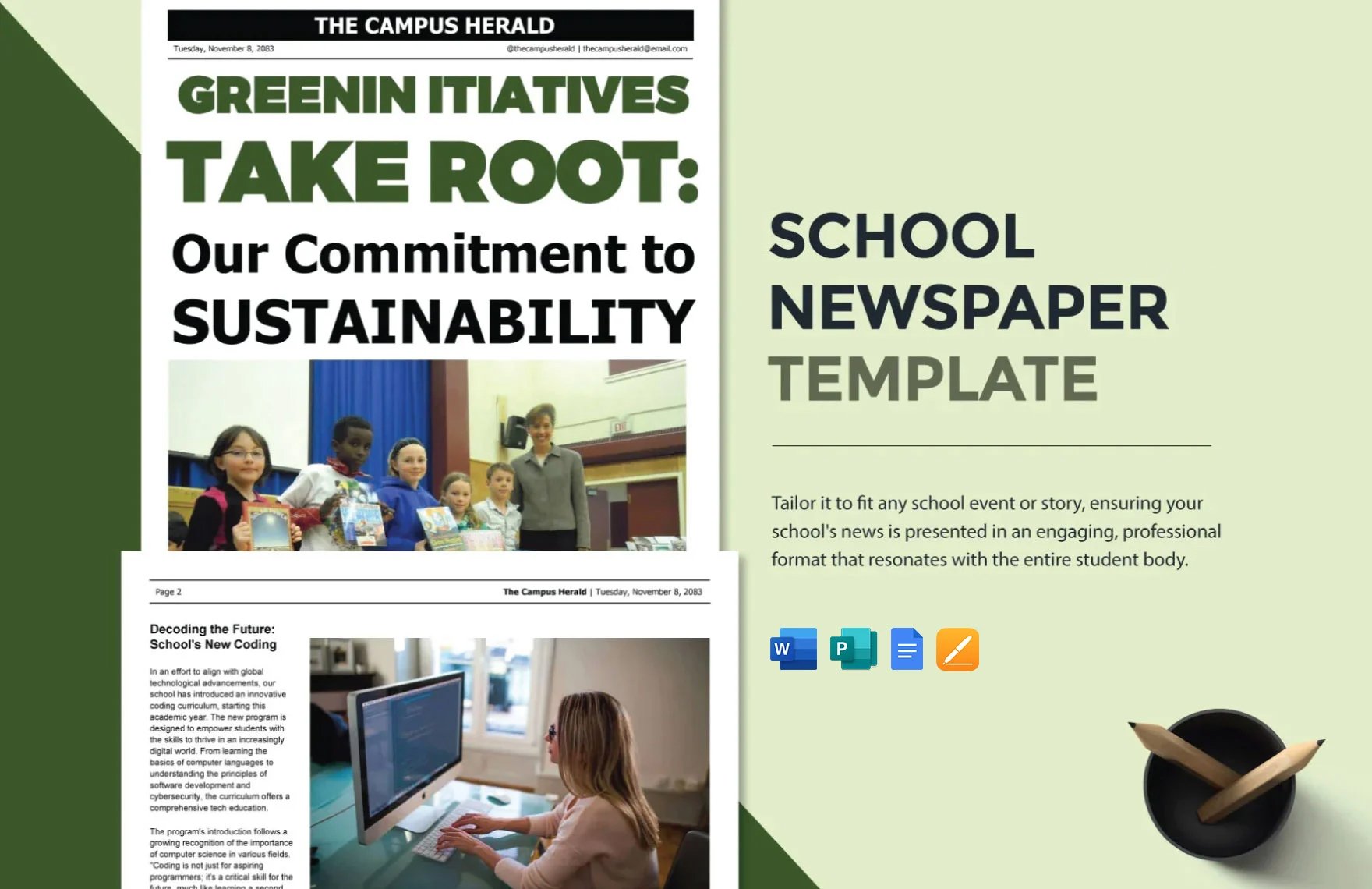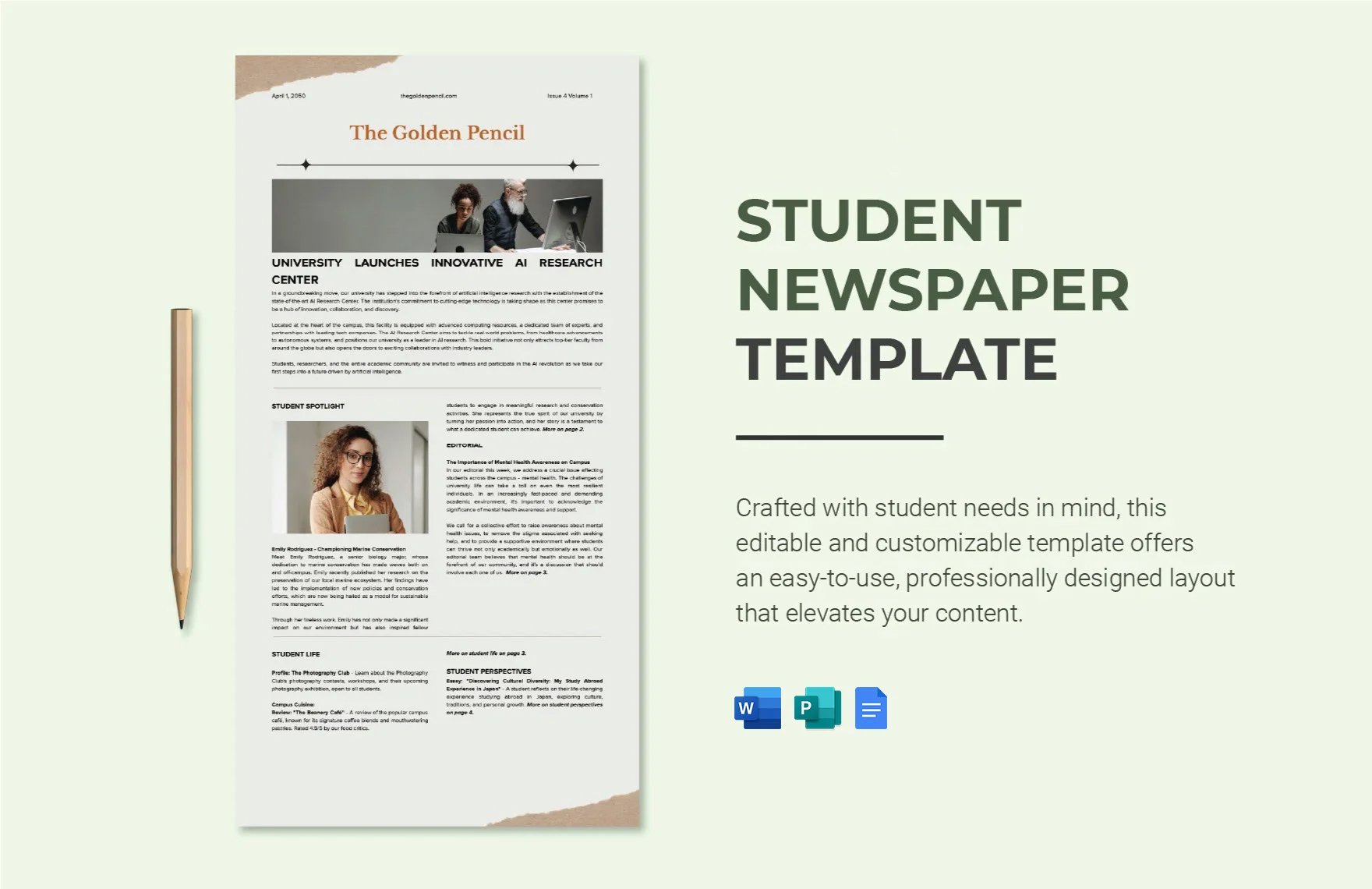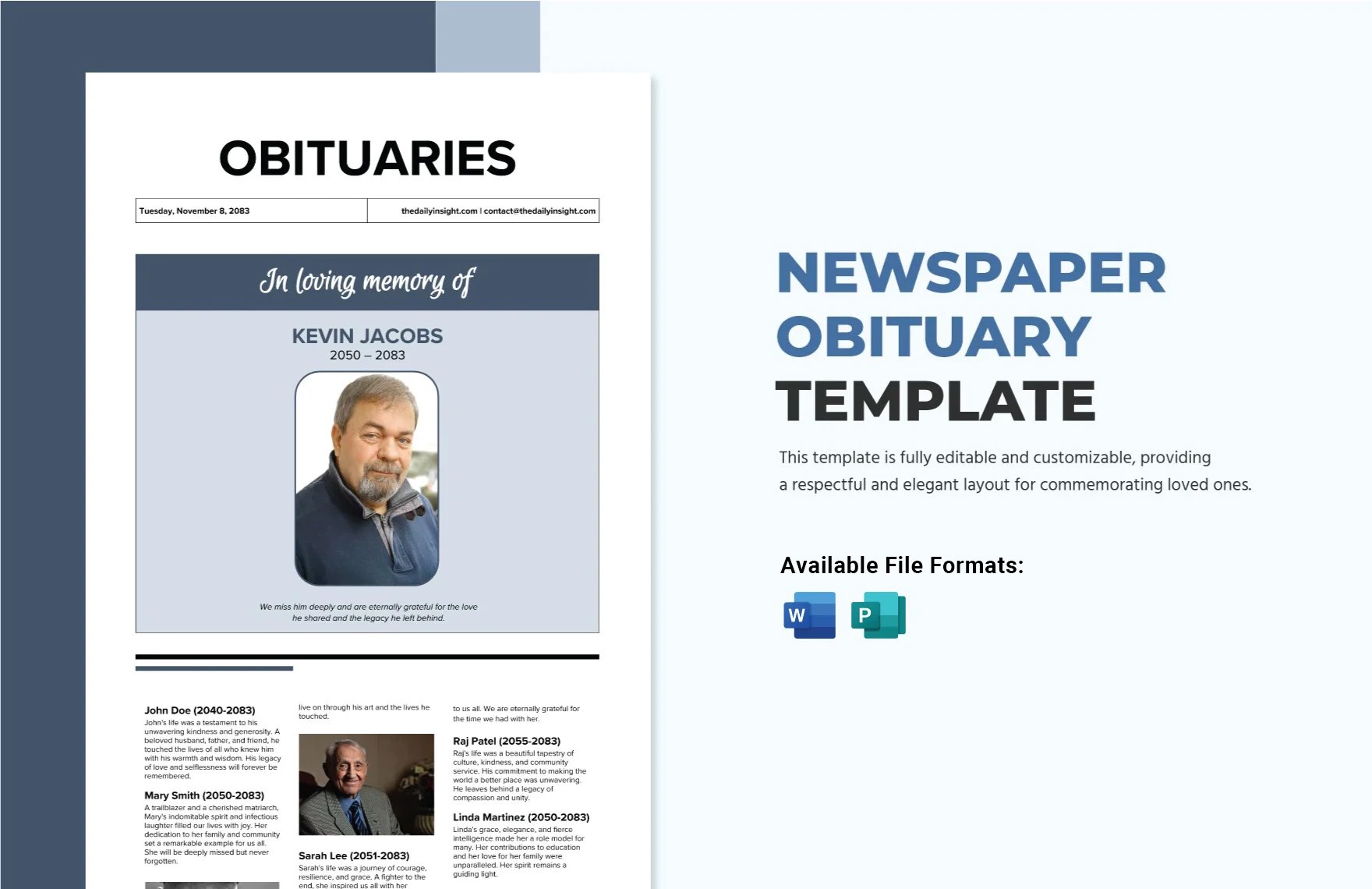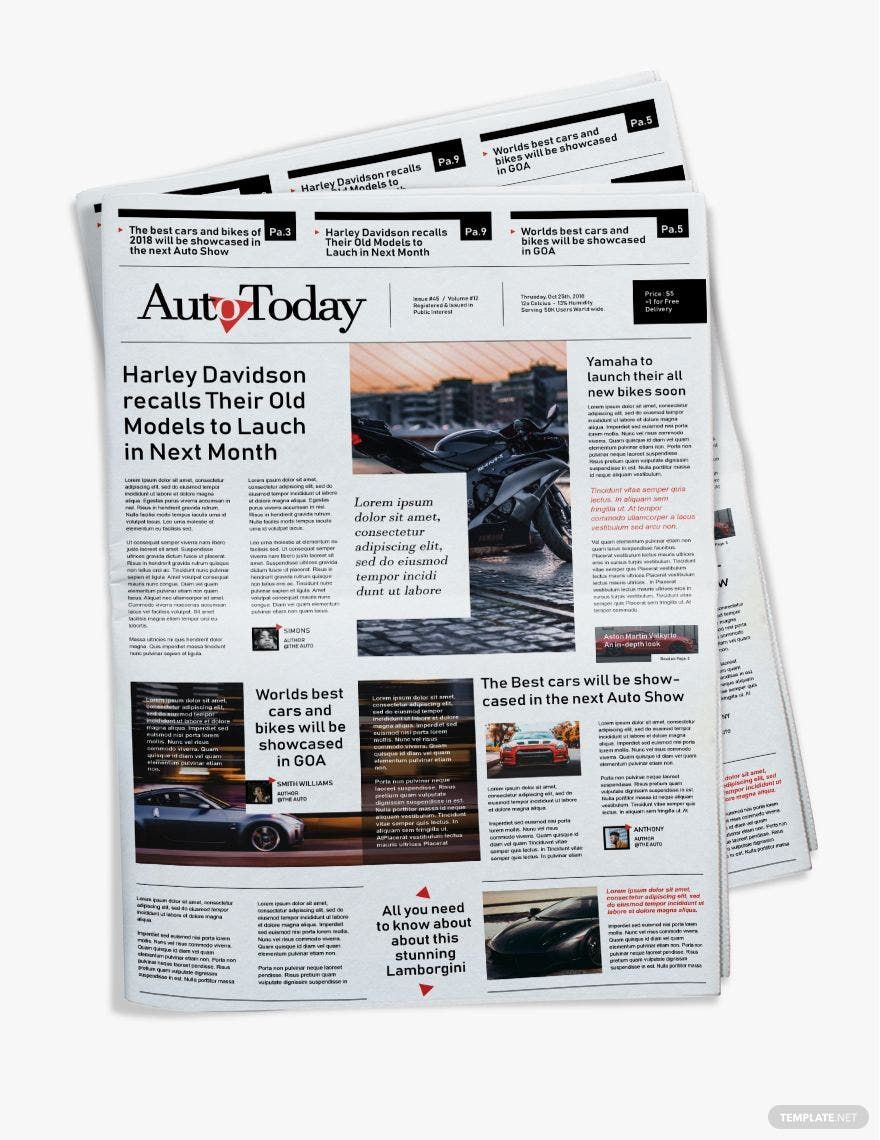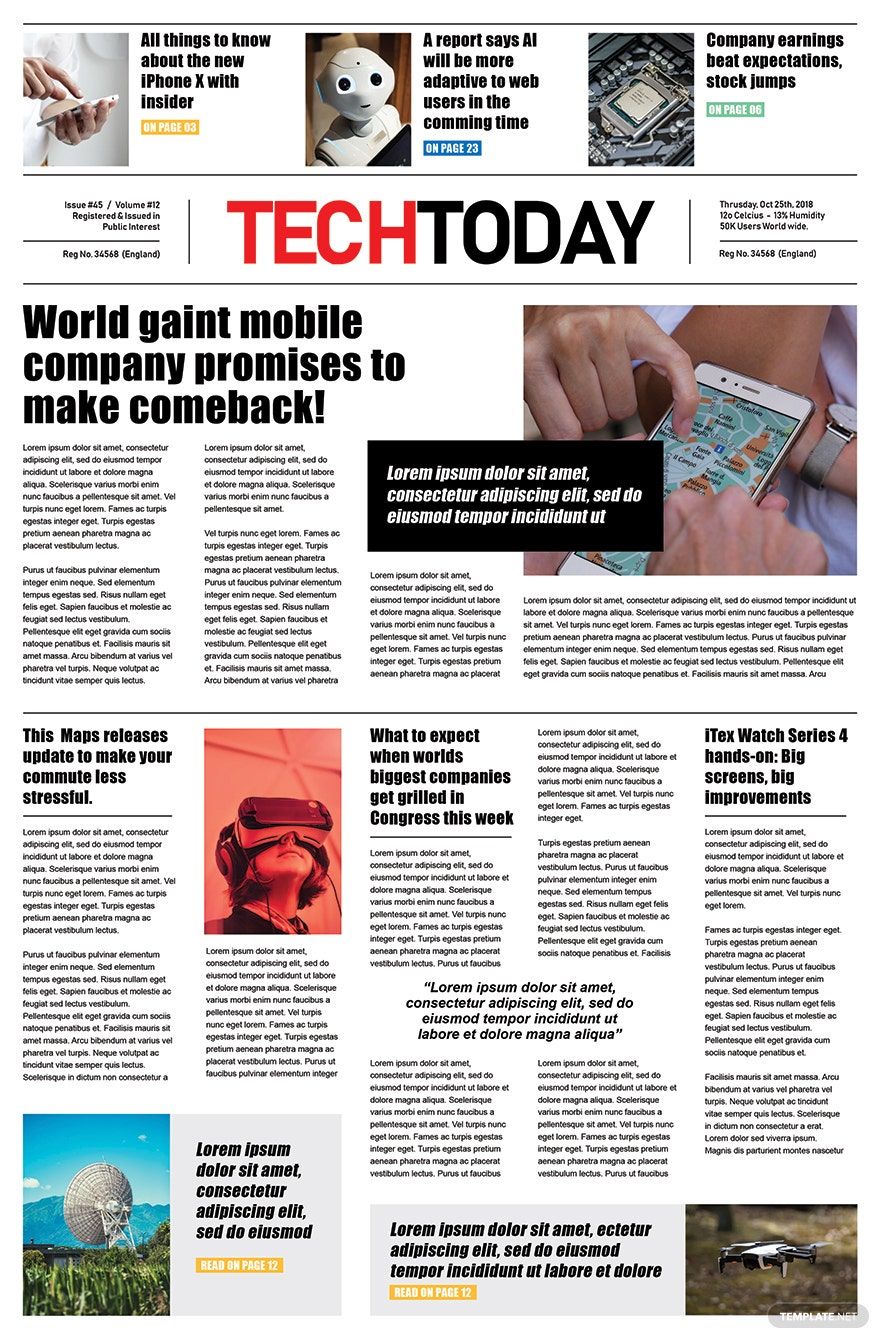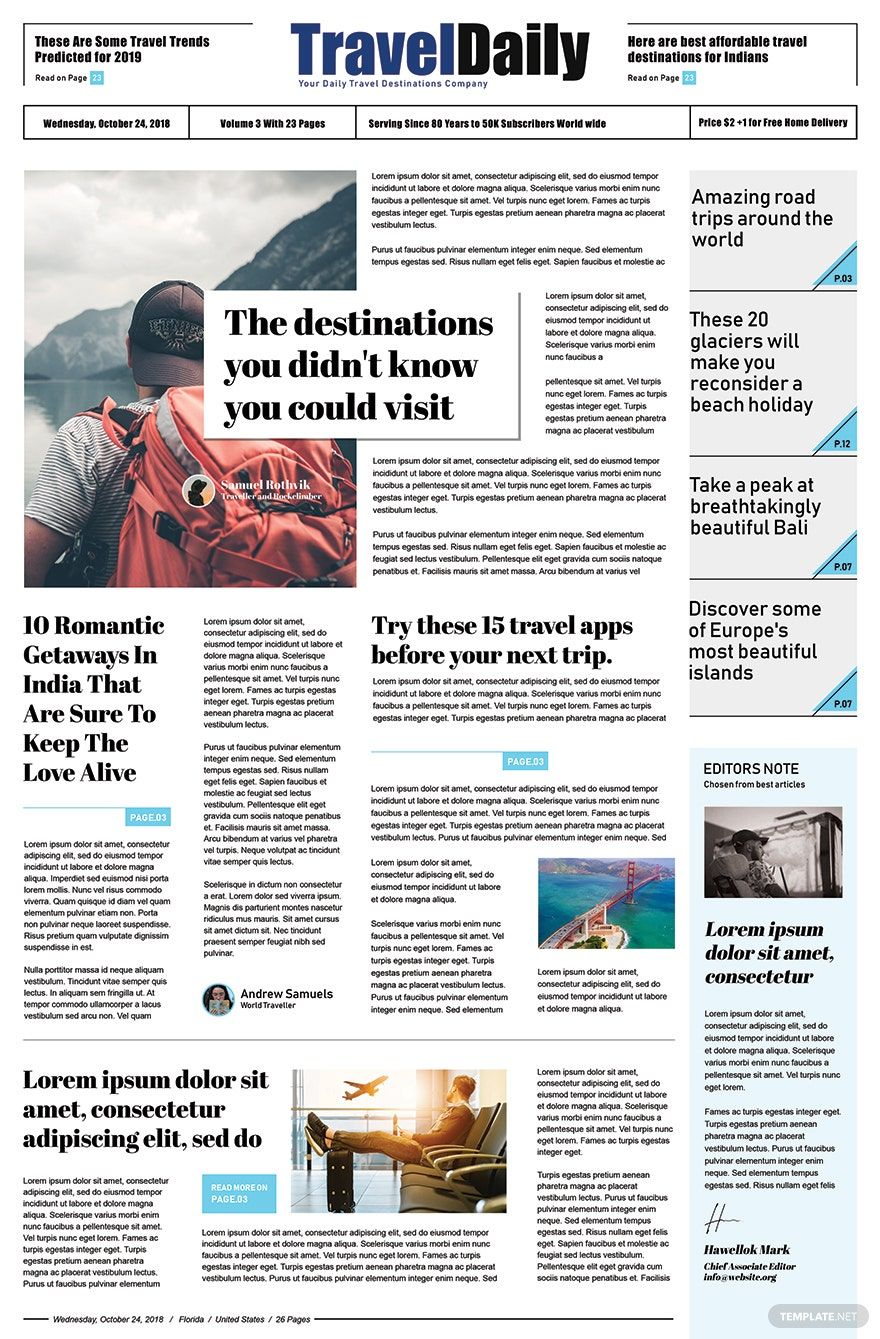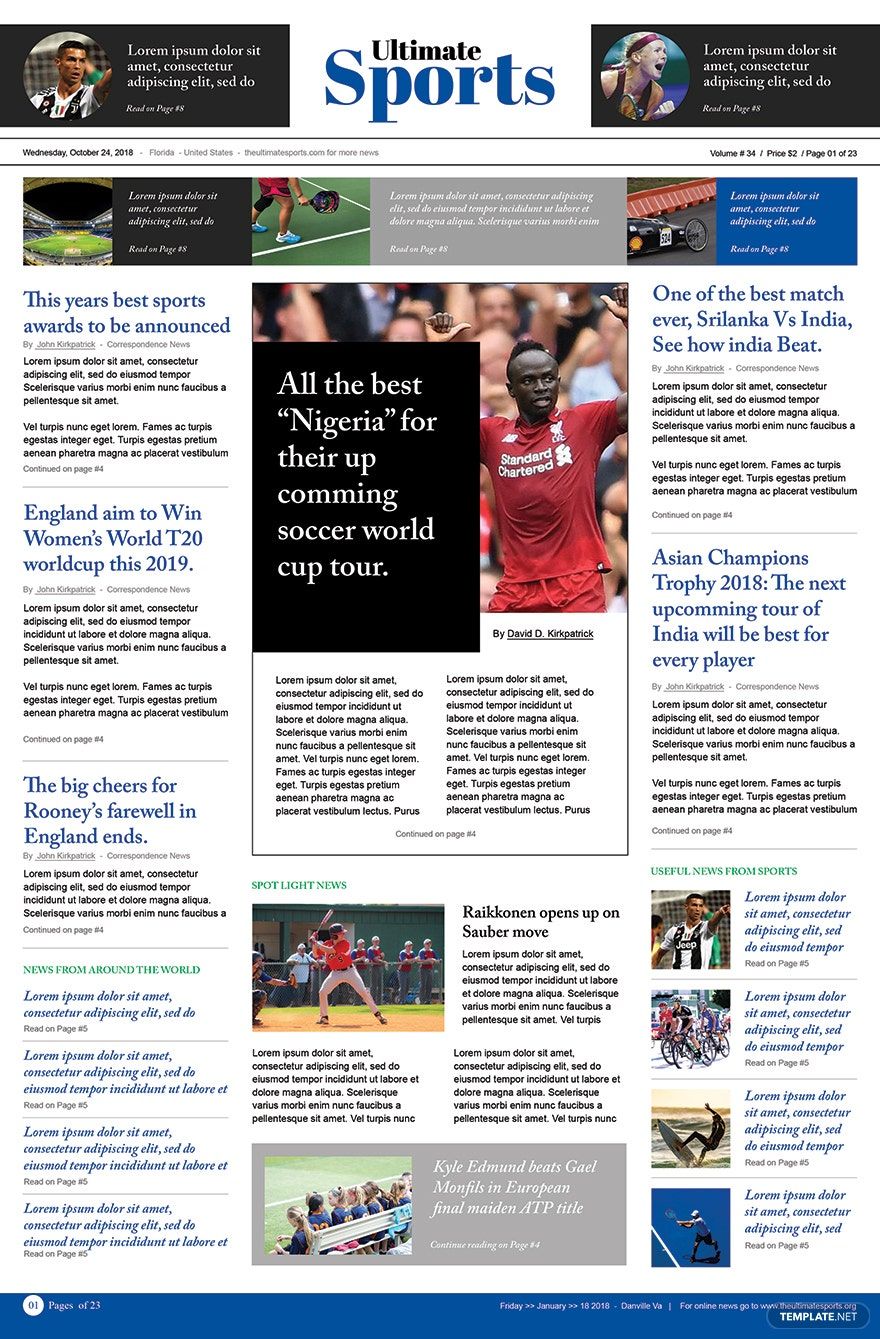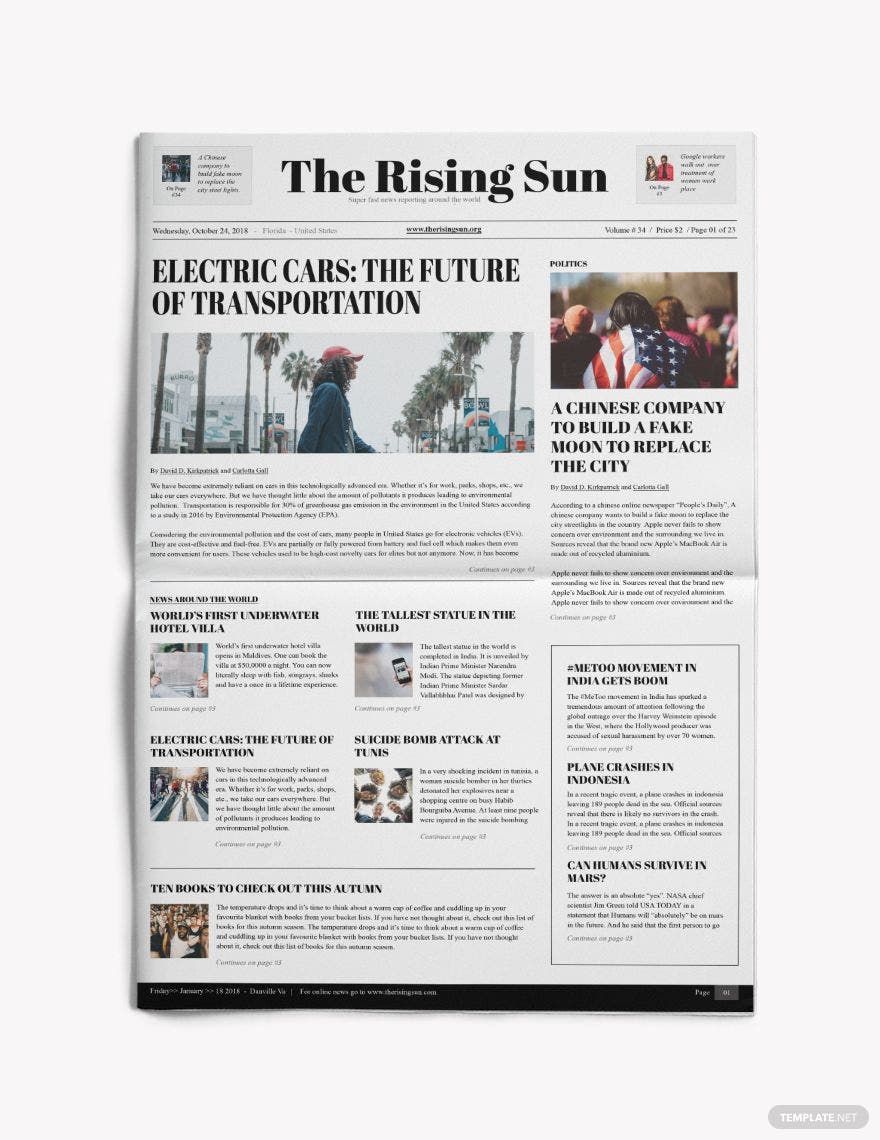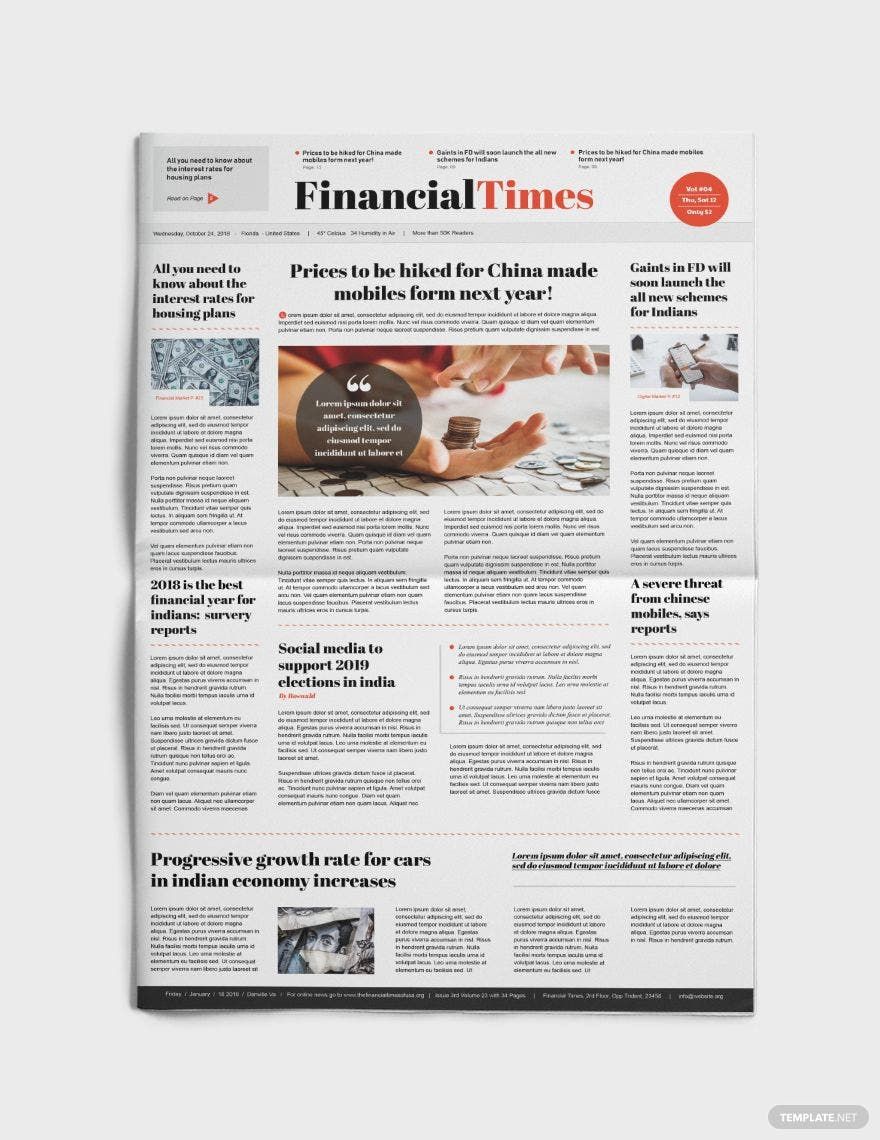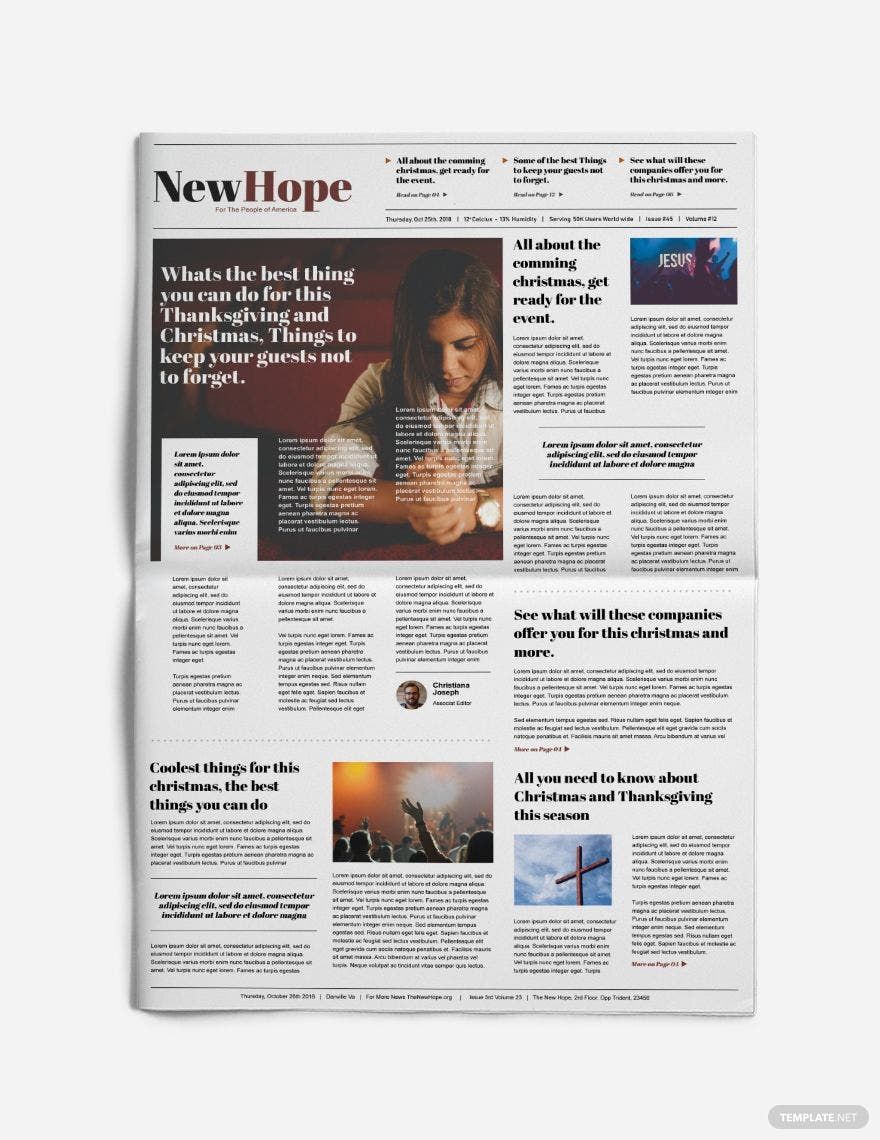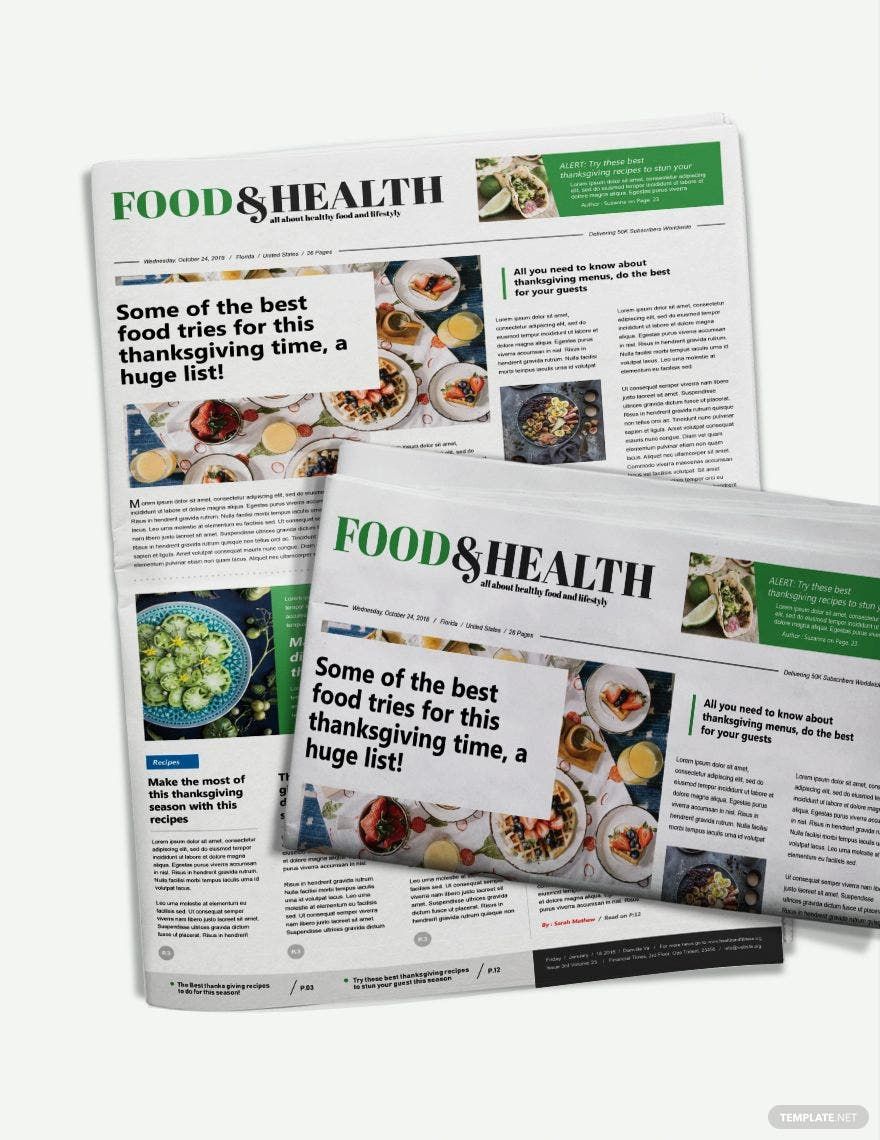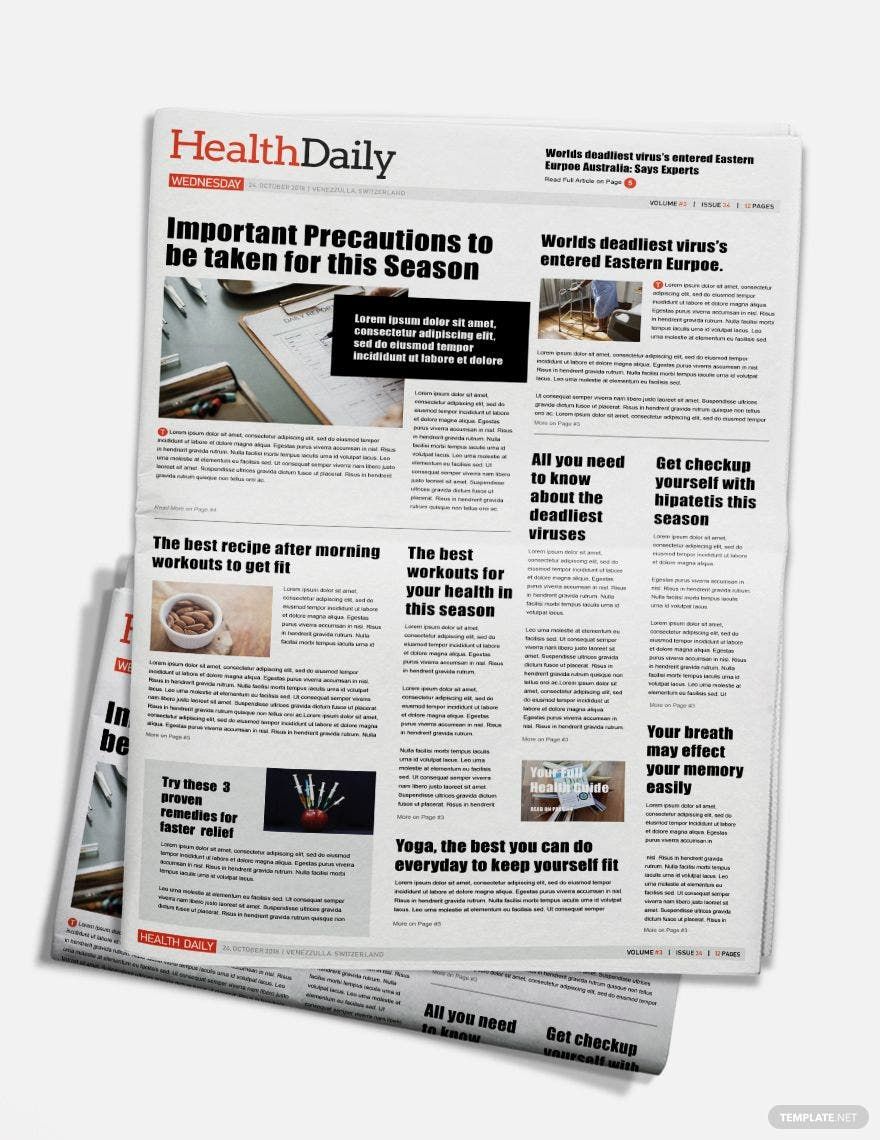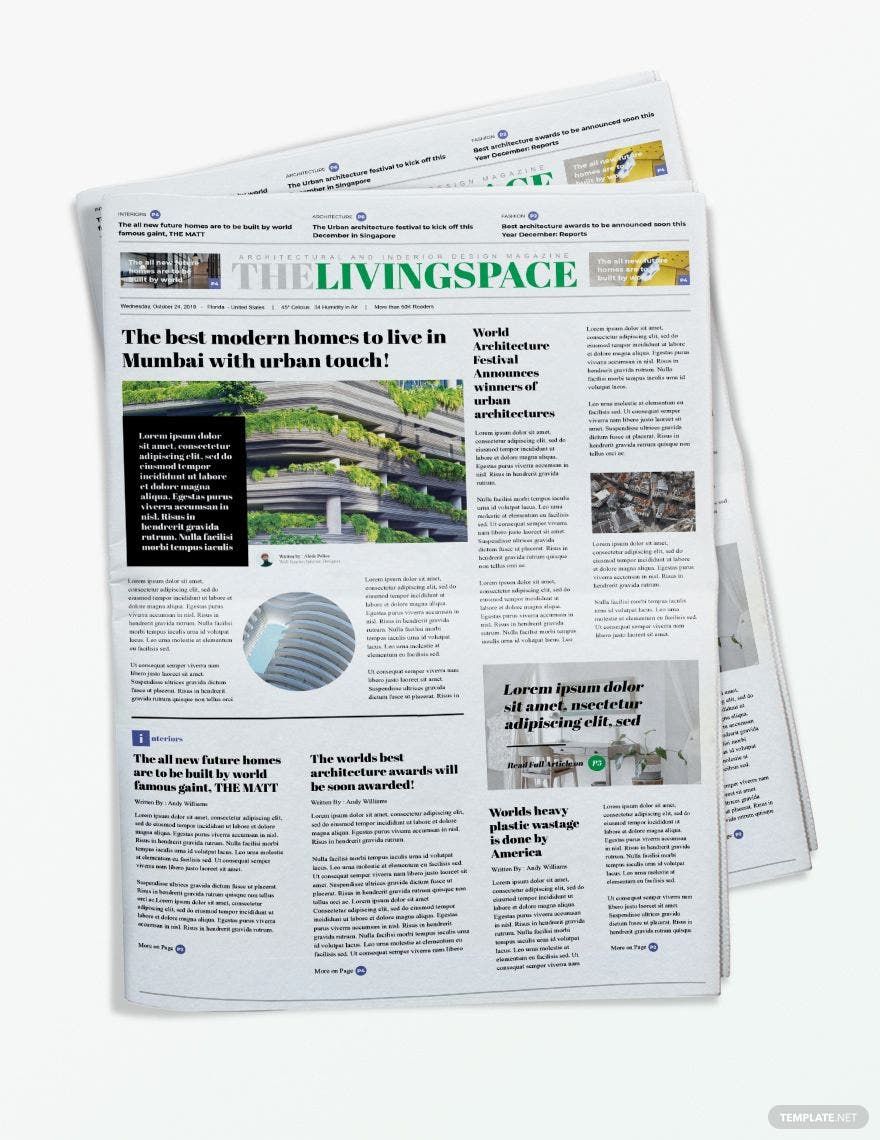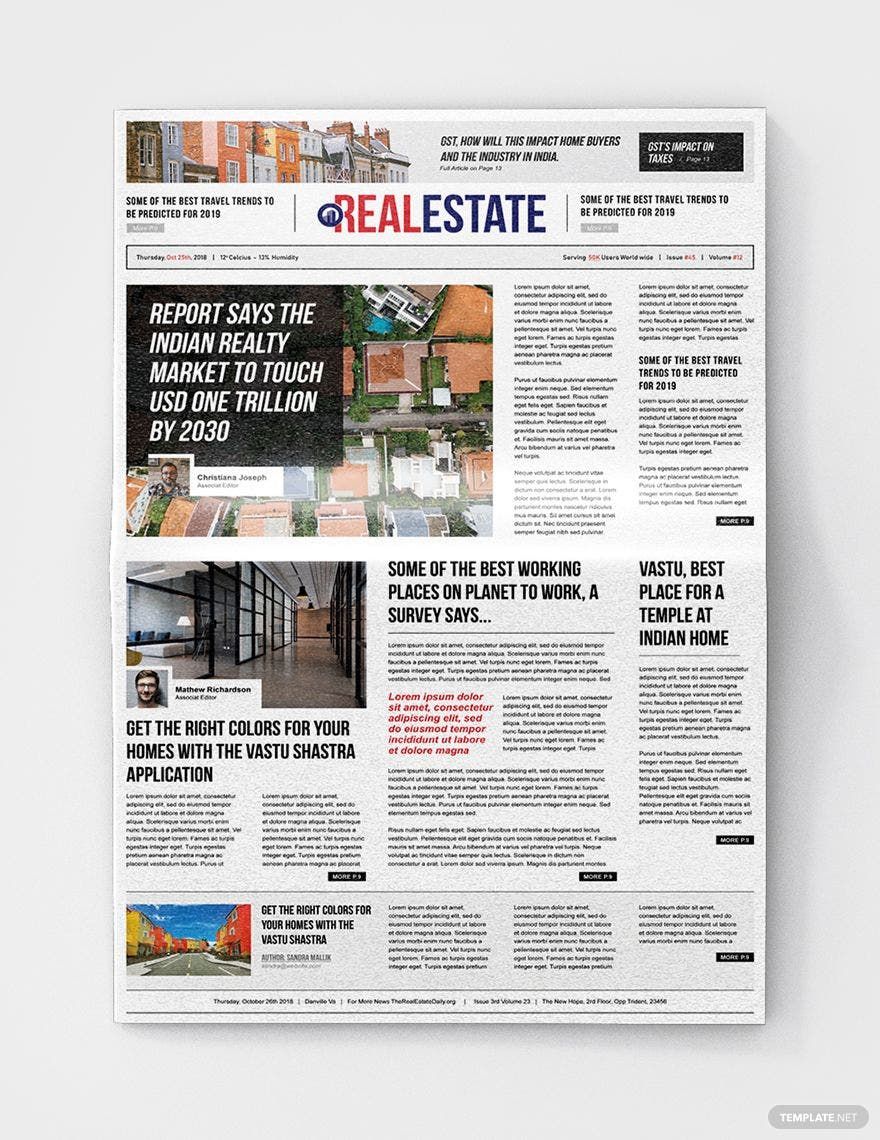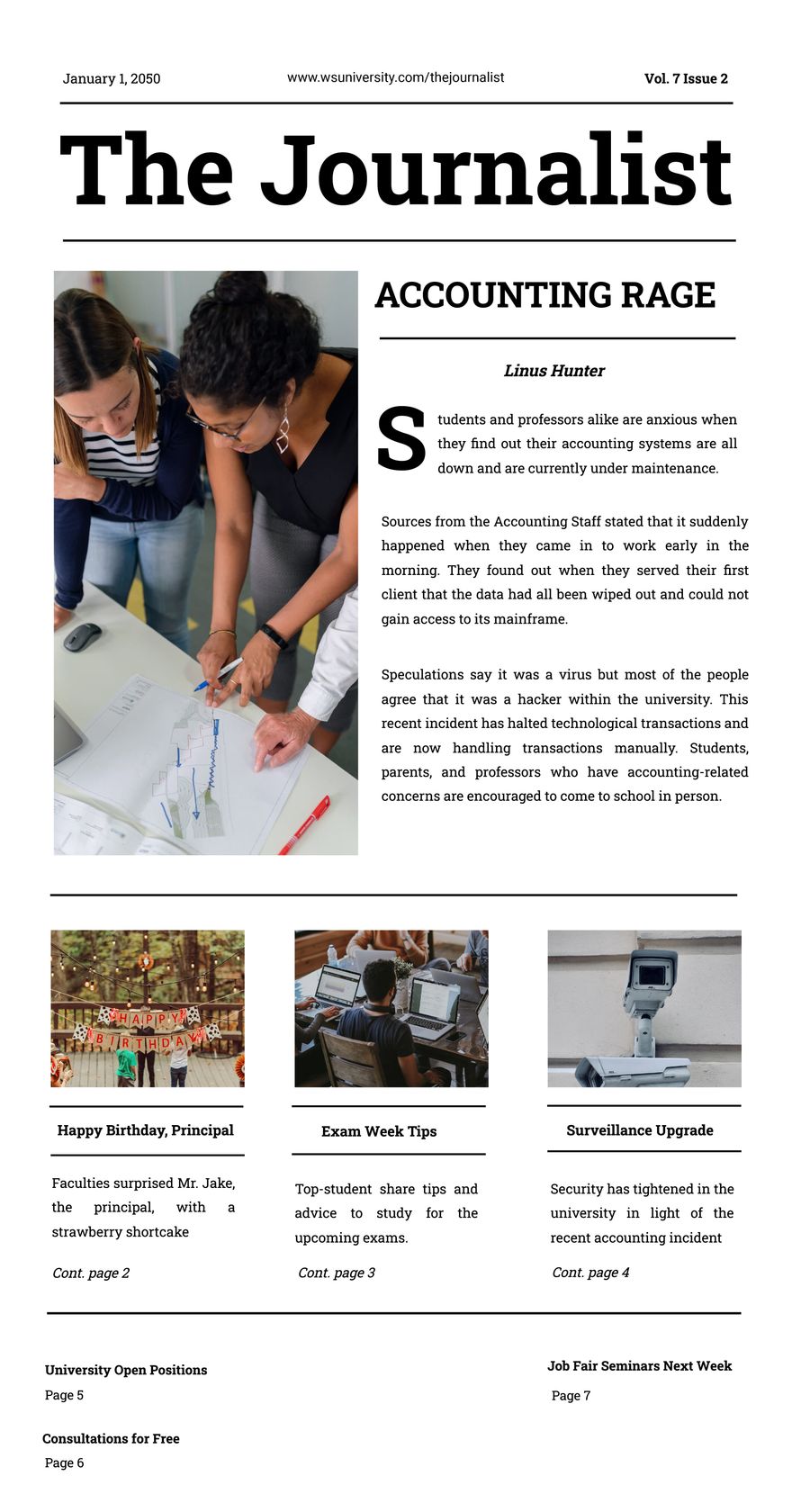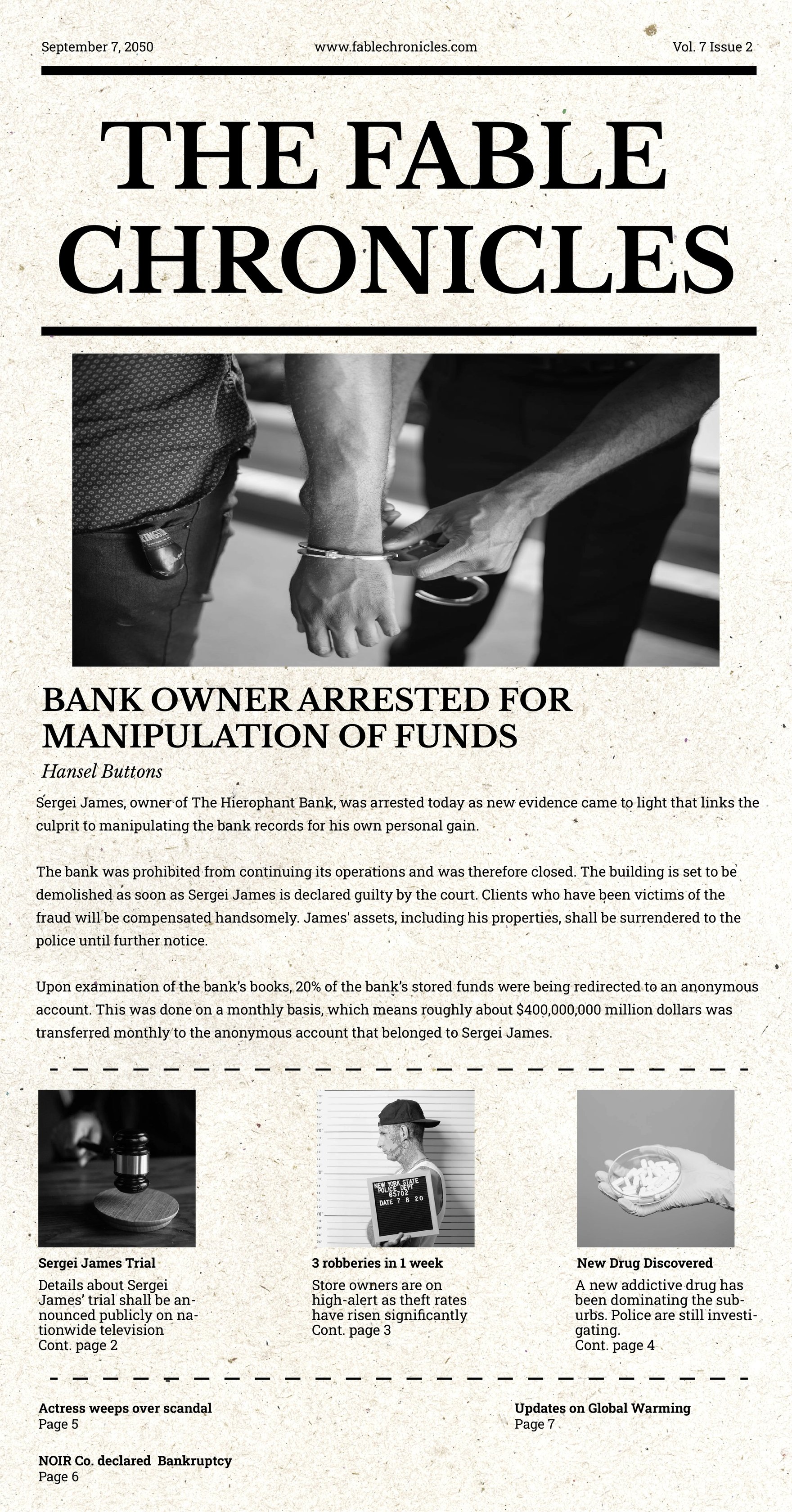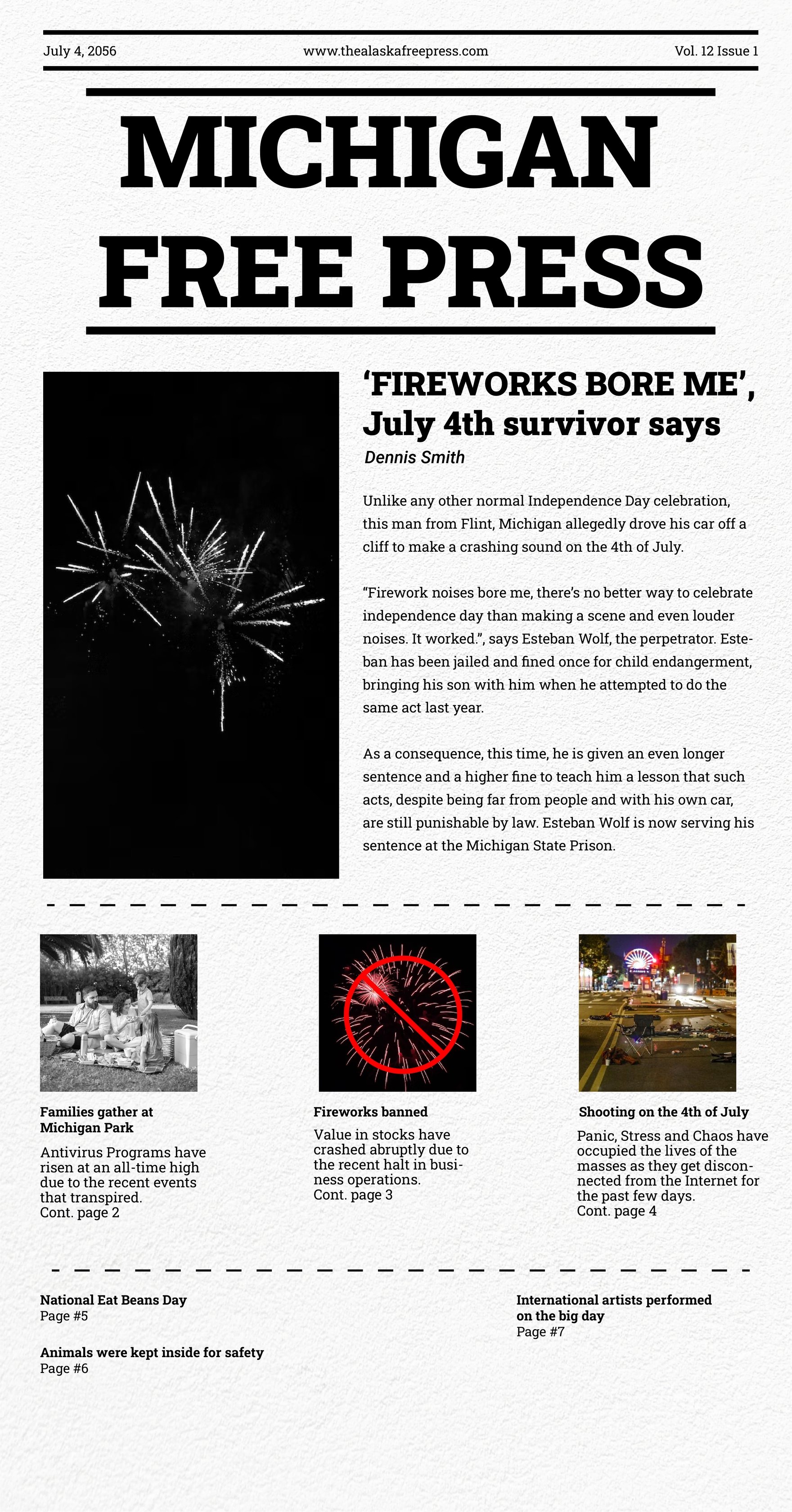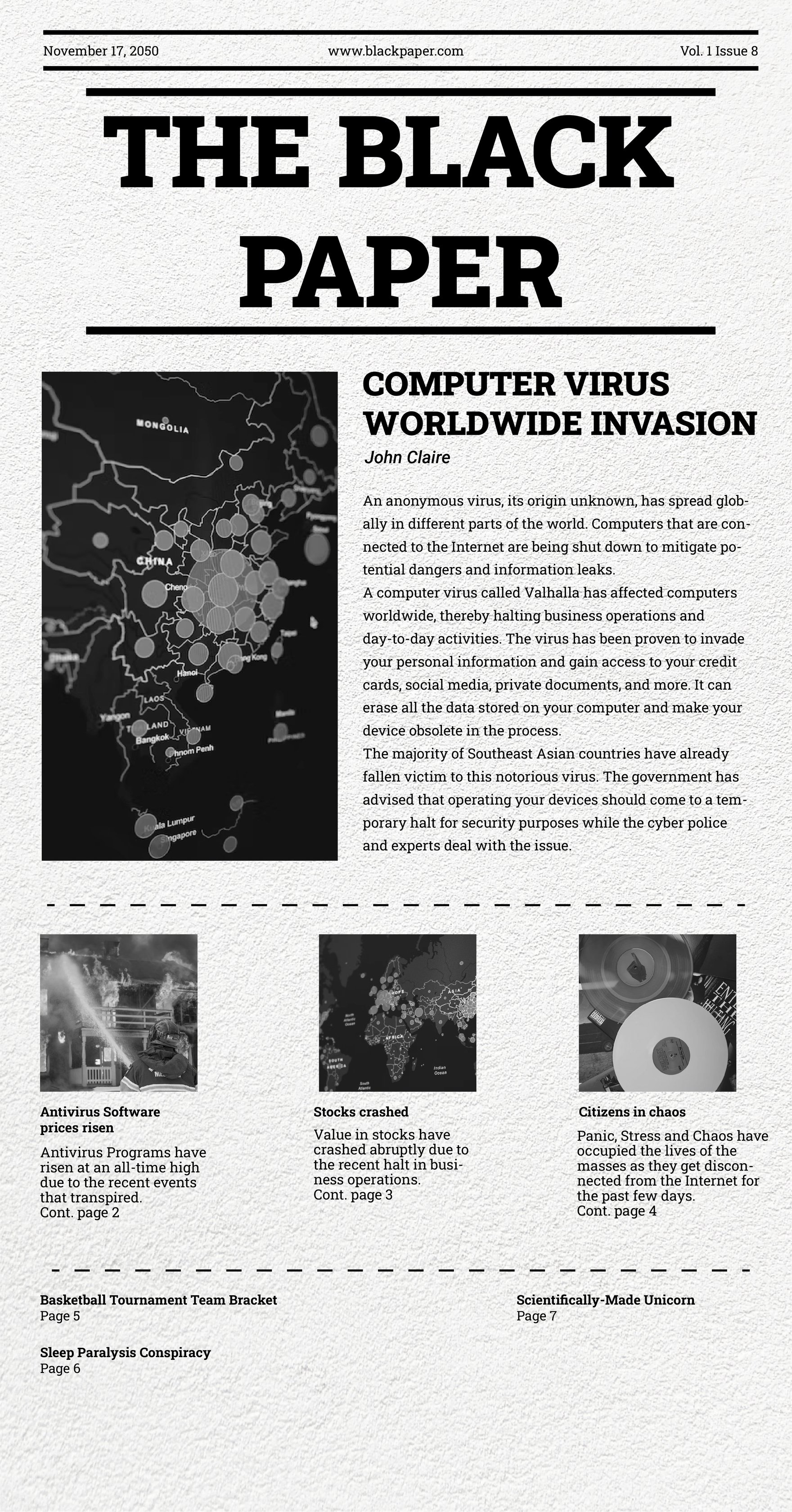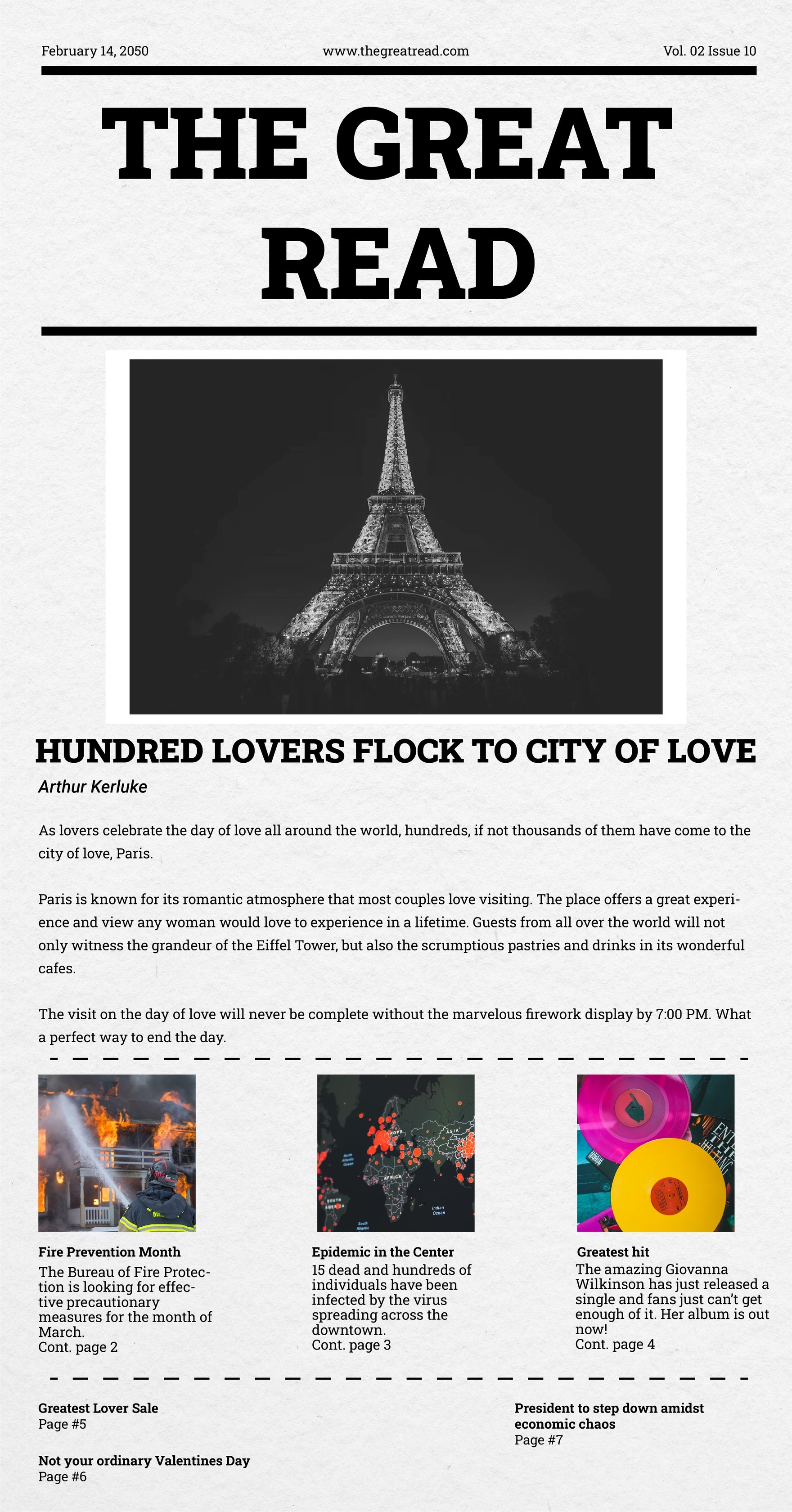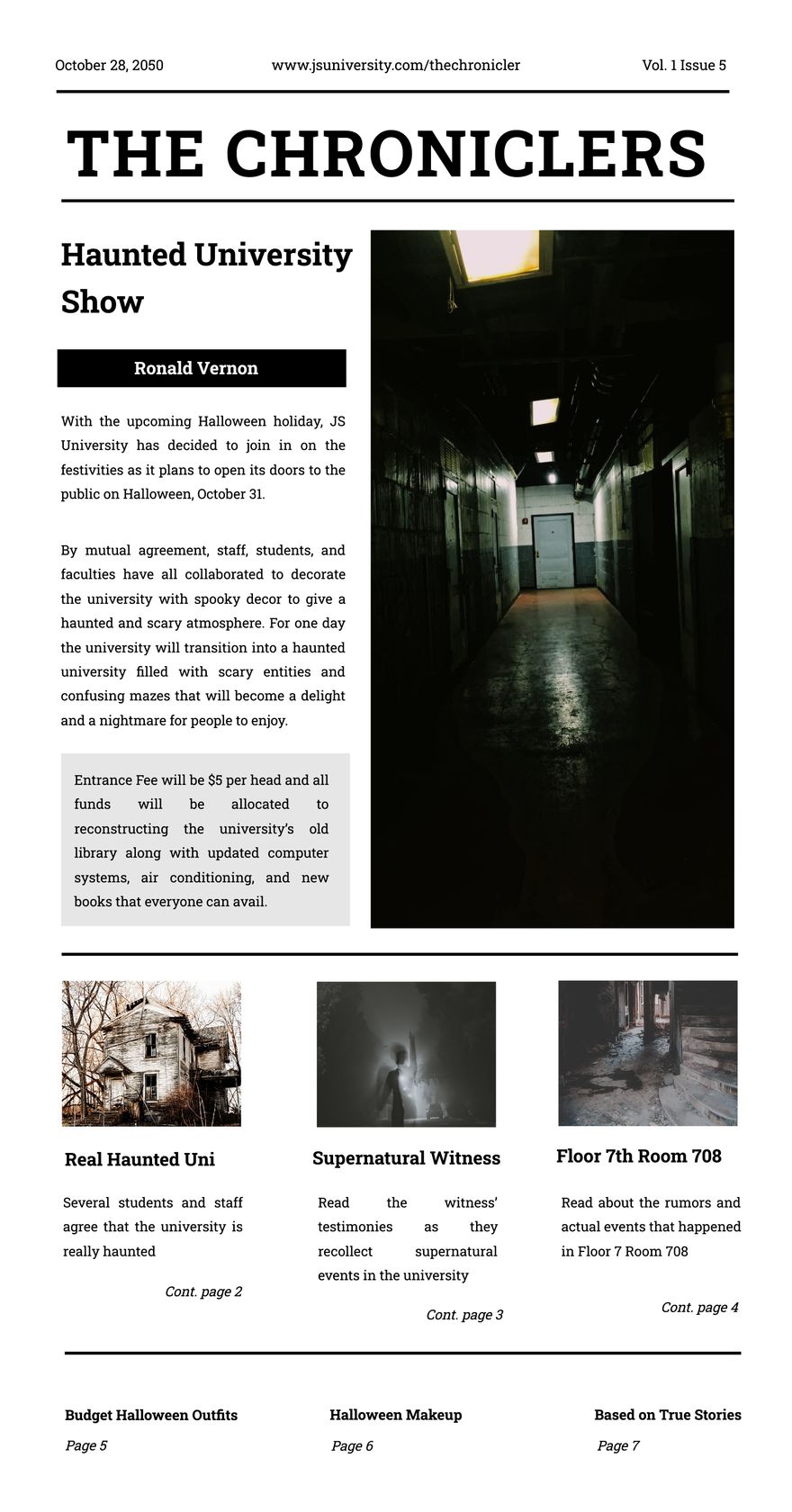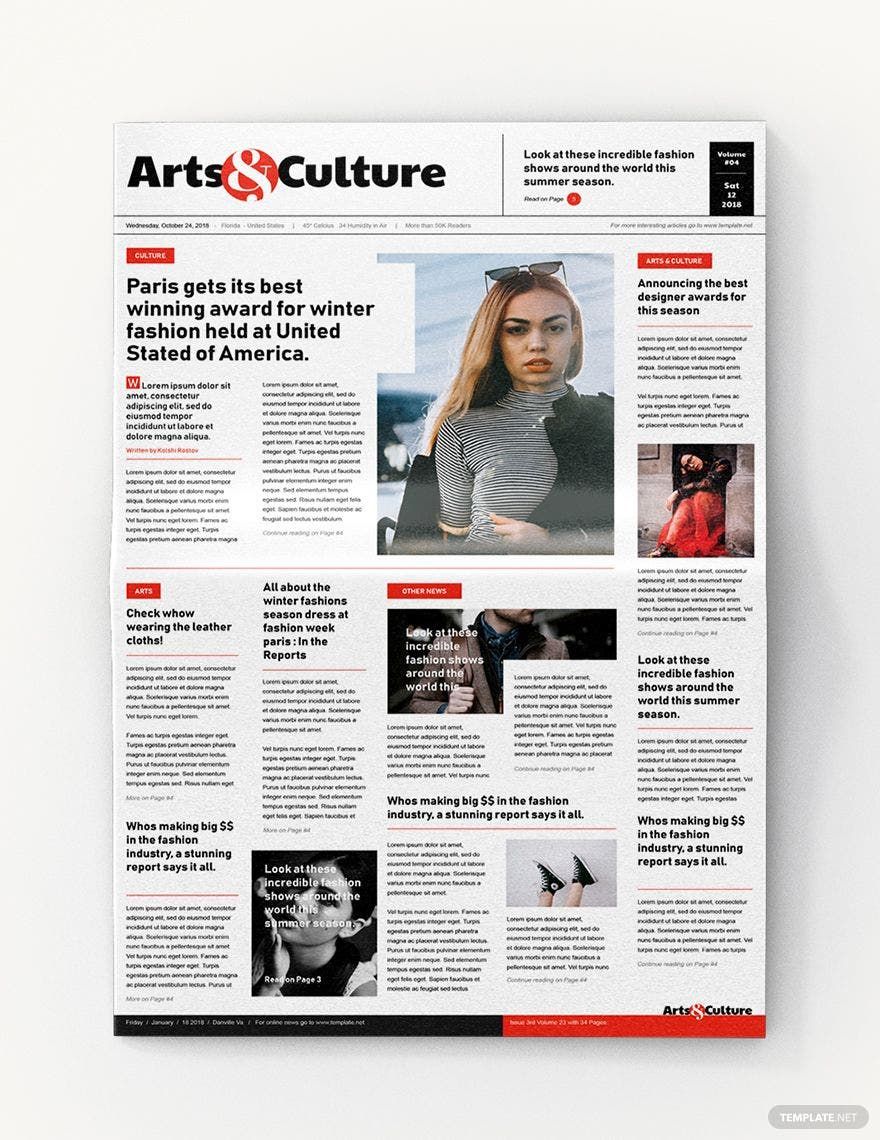Creating a newspaper from scratch is a tedious and time-consuming process; hence, using a professionally designed template to use as your main outline will surely help you a lot. Our Newspaper Templates in Microsoft Publisher is easy to edit and use. We made sure to include user-friendly features to help make the process convenient and efficient for you. Our ready-made templates are complete with a customizable layout, suggestive headlines, original illustrations, appropriate font styles, and so much more. Providing your newspaper name, logo, images, and contents can be quickly done with the help of the easy-to-edit feature. Achieve a high-quality output with the help of our printable Newspaper Templates. Download one in Publisher now!
How to Make Newspaper in Microsoft Publisher
Even with the presence of social media these days, a newspaper is still considered as one of the most trusted and effective news media. A newspaper is generally published on a daily, weekly, or other periodic bases, providing news, opinions, characteristics, and other public interest data that often carries business advertising. If you are in a news organization and sadly you are having difficulty in making one, well continue reading the rest of this article for we will show you some tips on how to create an effective one. On the other note, we also provided you some editable and printable templates that you can easily download. Here are the following steps:
1. Search for Stories
The very first step in making a newspaper is to search for stories. There are so many news values that you need to consider in writing for a newspaper, such as prominence or the proximity of the article you are writing on. But you have to choose one which is more intriguing and weighs more importance to the attention of your audiences. Step out of your comfort zone and go outside! Interact with the different individuals of your community and discover distinctive stories.
2. Categorize the Stories
Once you're done looking for stories, it is now time for you to categorize them based on how big or significant the issue is. Through that way, you can determine what the stories you will put in the front pages, or the headline of the newspaper are. For instance, if you have a story about a known official who is stealing money in your government and a story about a boy who took $50 in a taxi cab, which story do you think has a more significant issue? Aha! You're right! The story about the corrupt official must be placed in the headline of your newspaper for many citizens are interested in it compared to the other story, You may state the story about the boy who stole $50 on the other pages of the newspaper template.
3. Do the Lay-outing
Designing a layout even for a school newspaper is quite tricky. If you want to make your work much more manageable, then try installing Microsoft Publisher (.pub) to ease your worries away. With the help of this software's features, you can easily create a column, bullets, and a cover page for your newspaper that will help your readers understand more of the content inside your newspaper.
4. Edit both the Layout and the Article
Make sure that your layout and articles have no room for mistakes! If you are the editor, check if the story about the incident report has a credible source to avoid the dissemination of fake news. Check if the format, spellings, and grammar were appropriately written. One simple mistake from your article will affect the credibility and the reputation of your news organization. That is why we highly recommend to edit and to doublecheck the articles before publishing them to the public.
5. Print or Publish the Stories
Since we are now living in modern technology, you may now post your articles online if you want to achieve a broader audience. But if you're going to pursue the traditional way, then feel free to print your newspaper in plain high-quality paper stock. If you have a simple budget, print out as many copies as you can then start selling it early in the morning on the next day so that many people can read the news.
